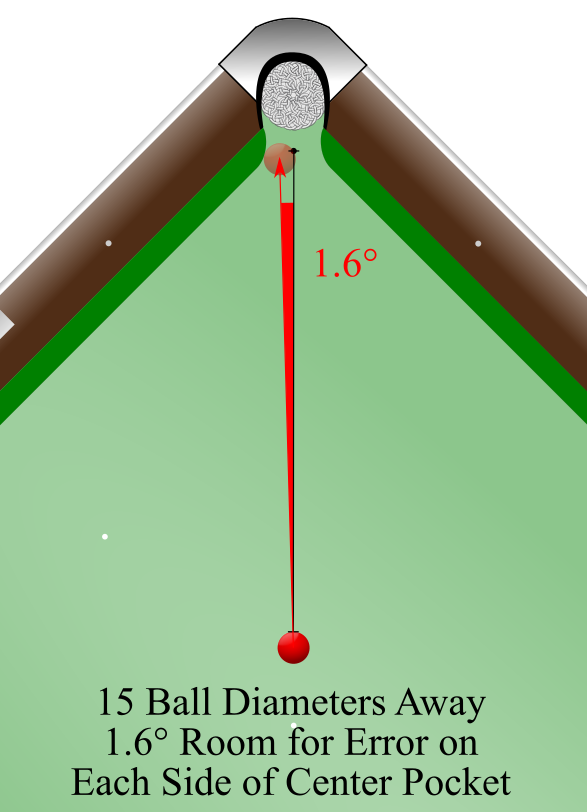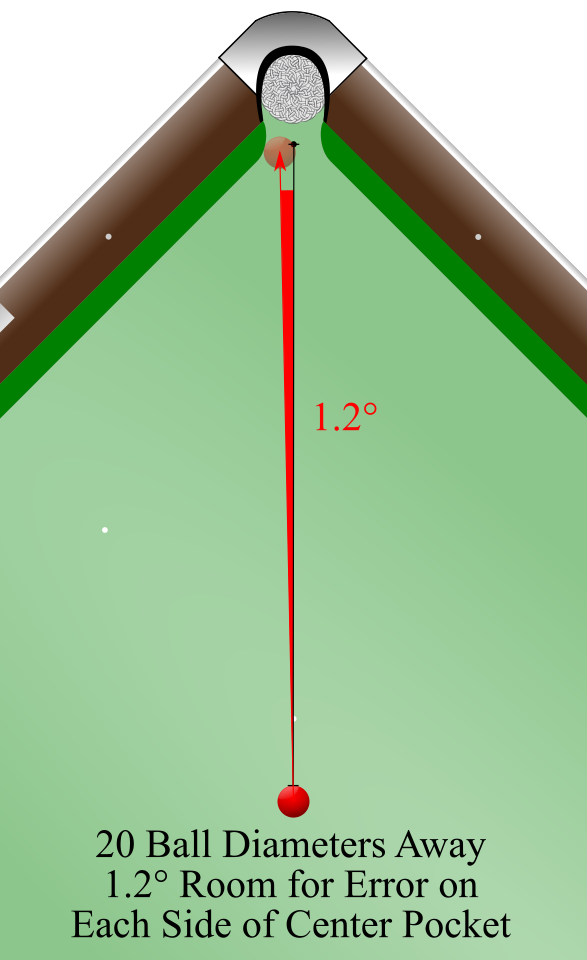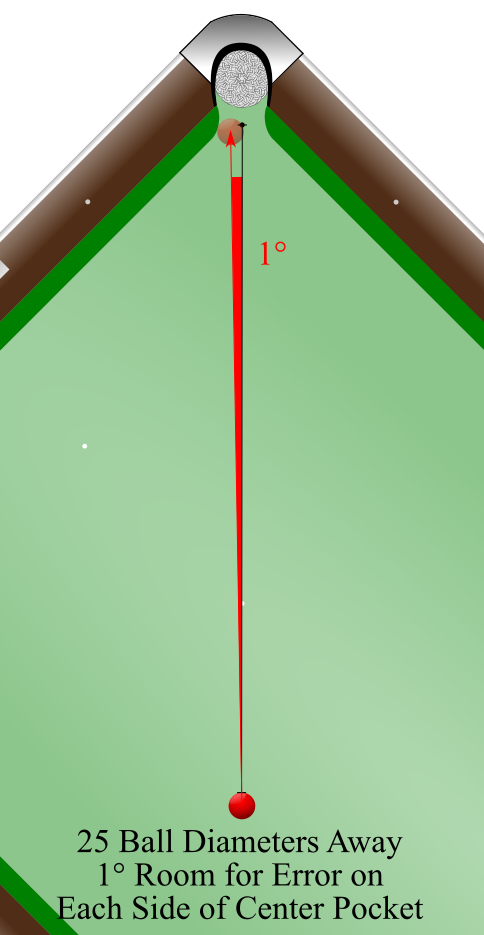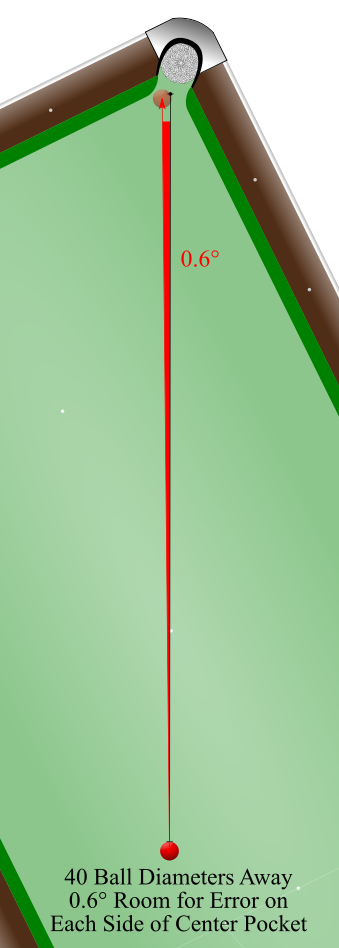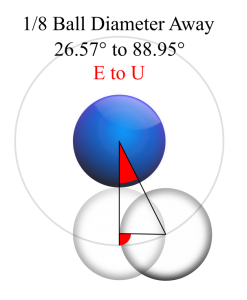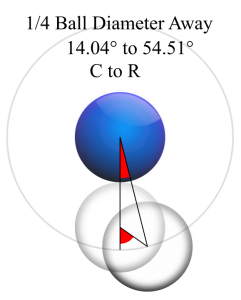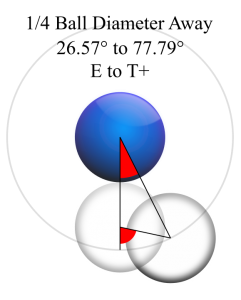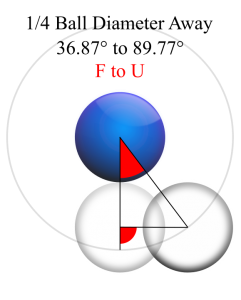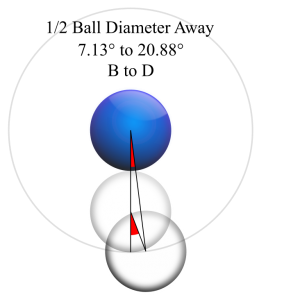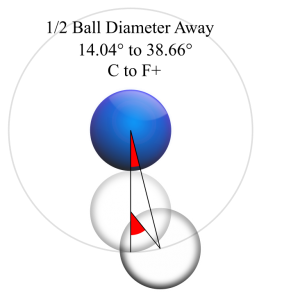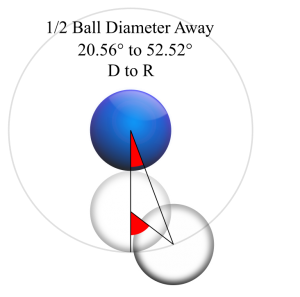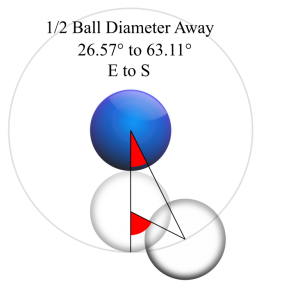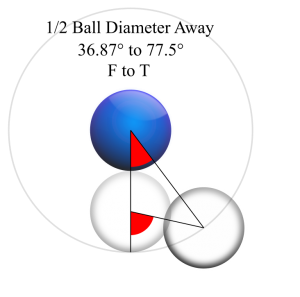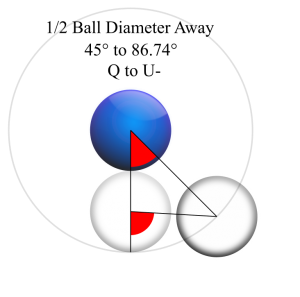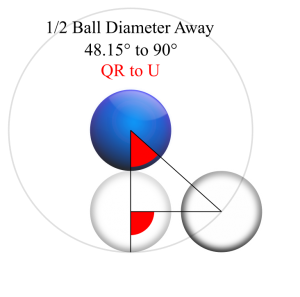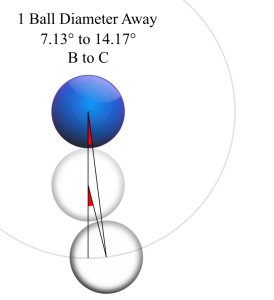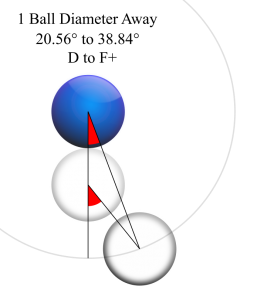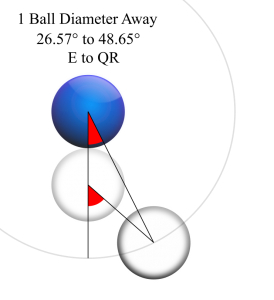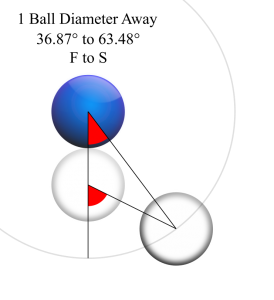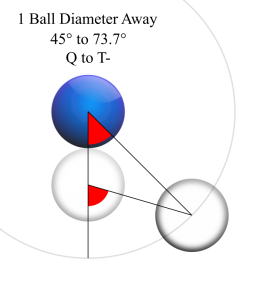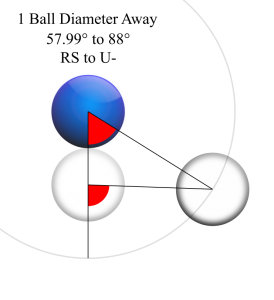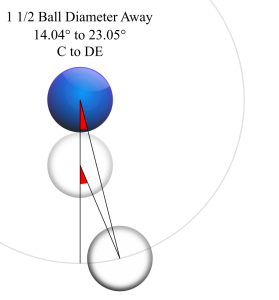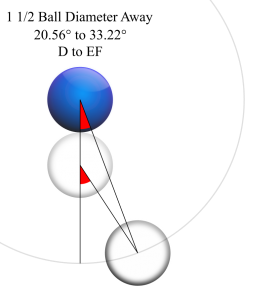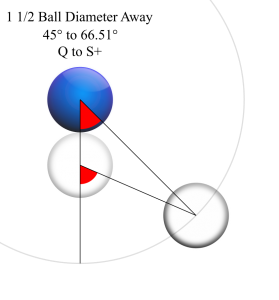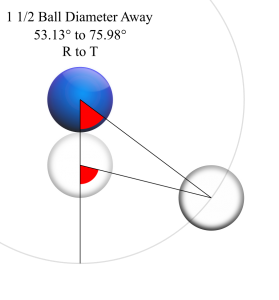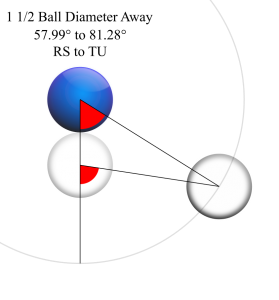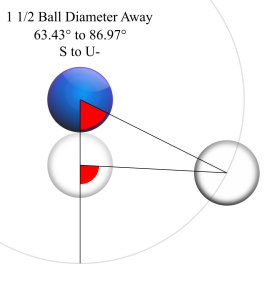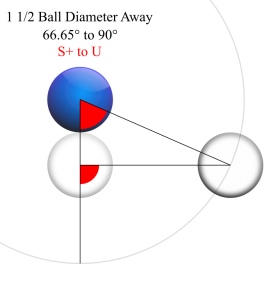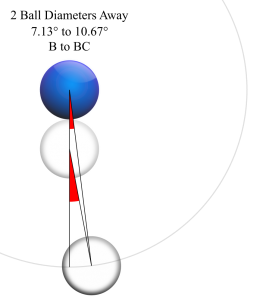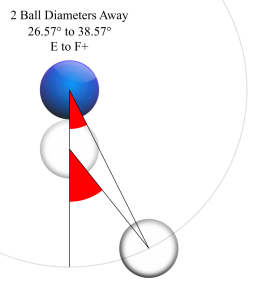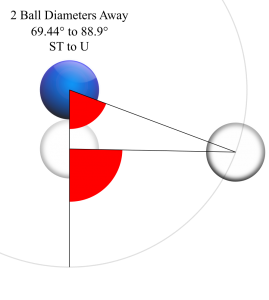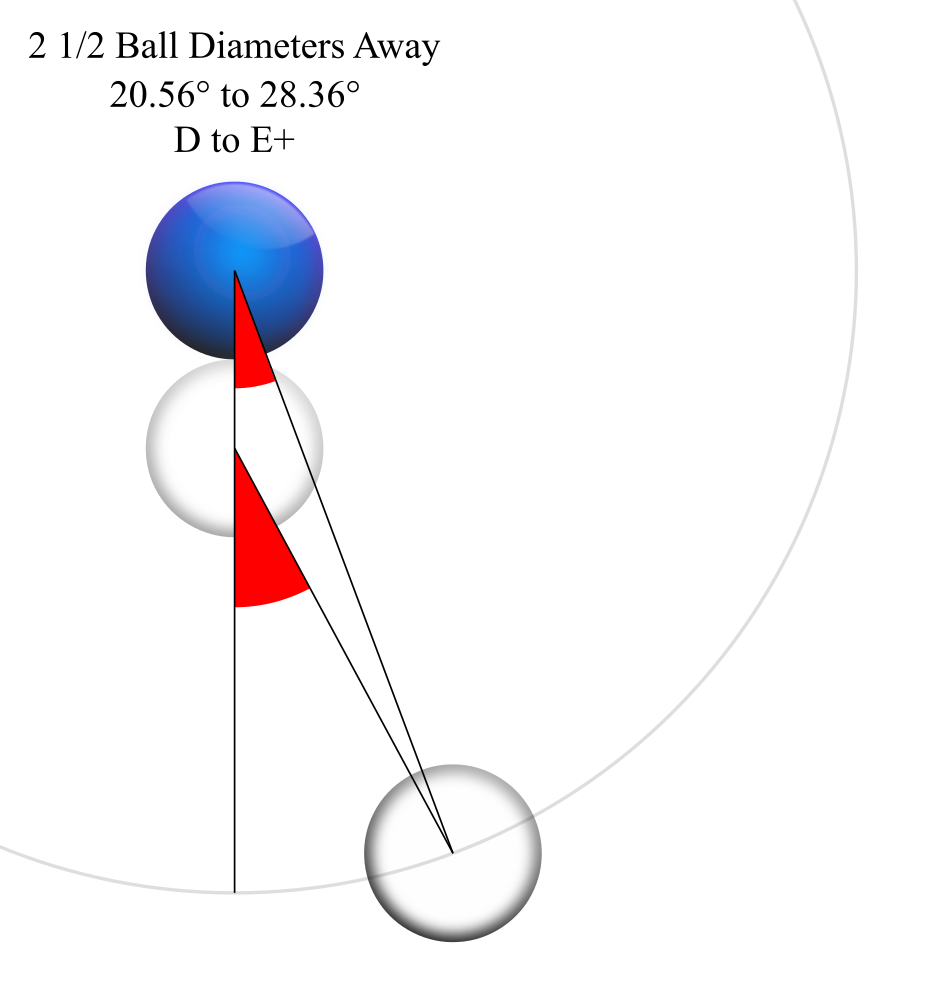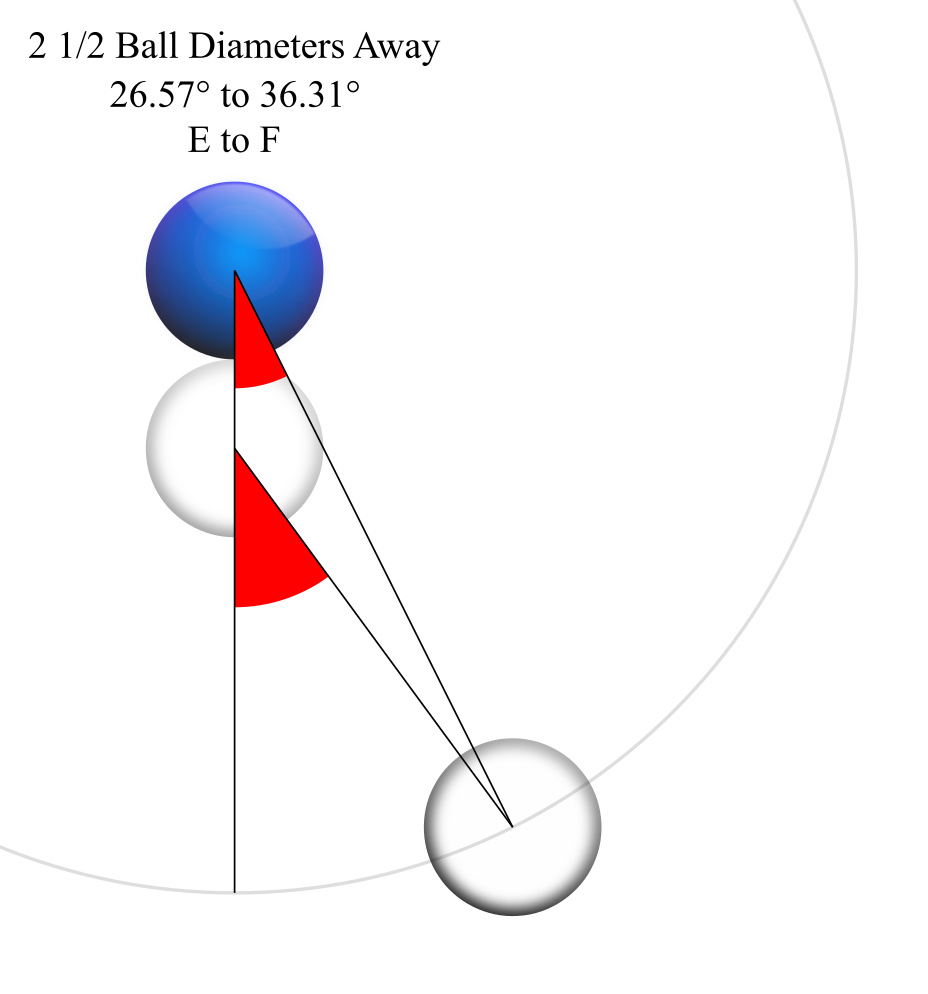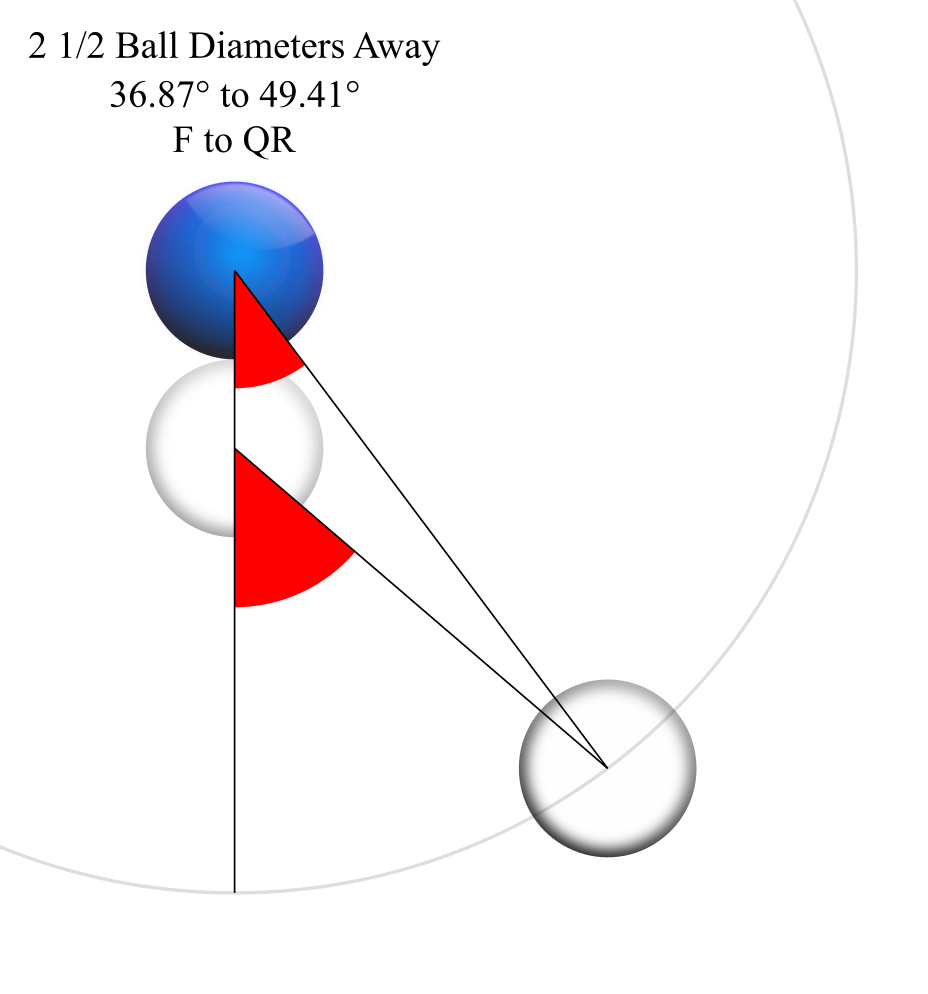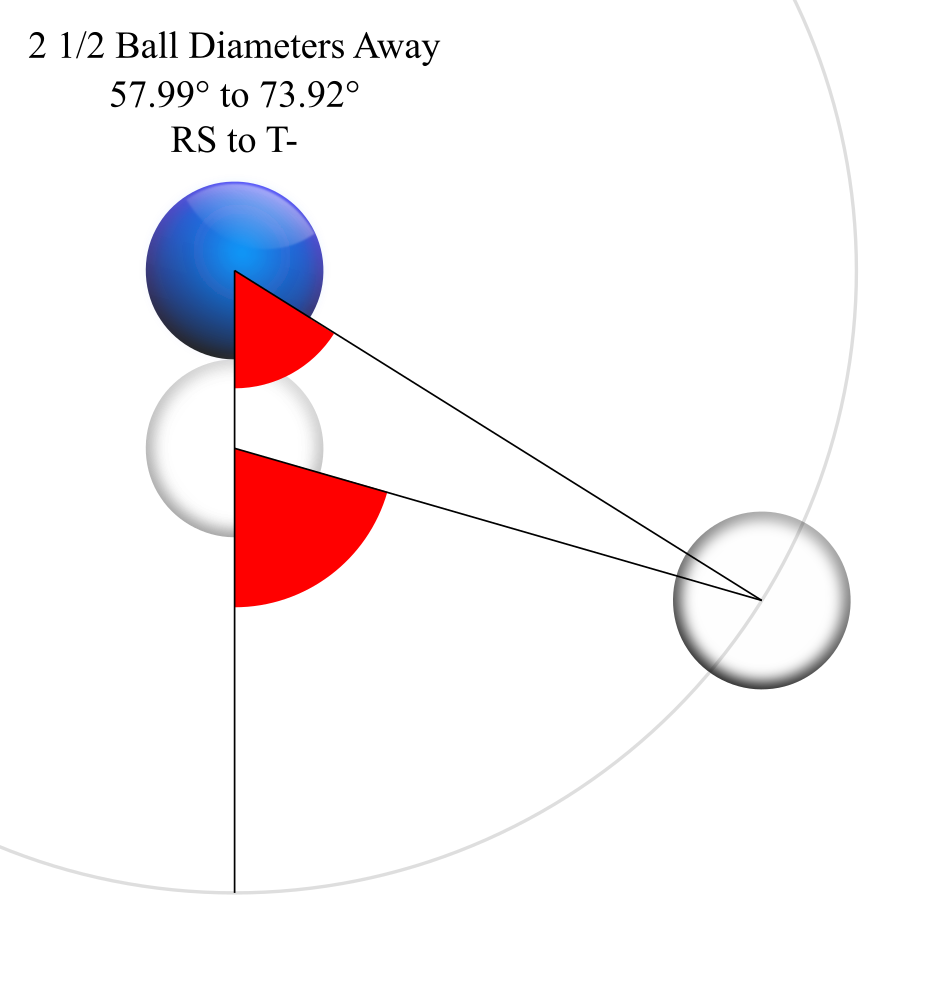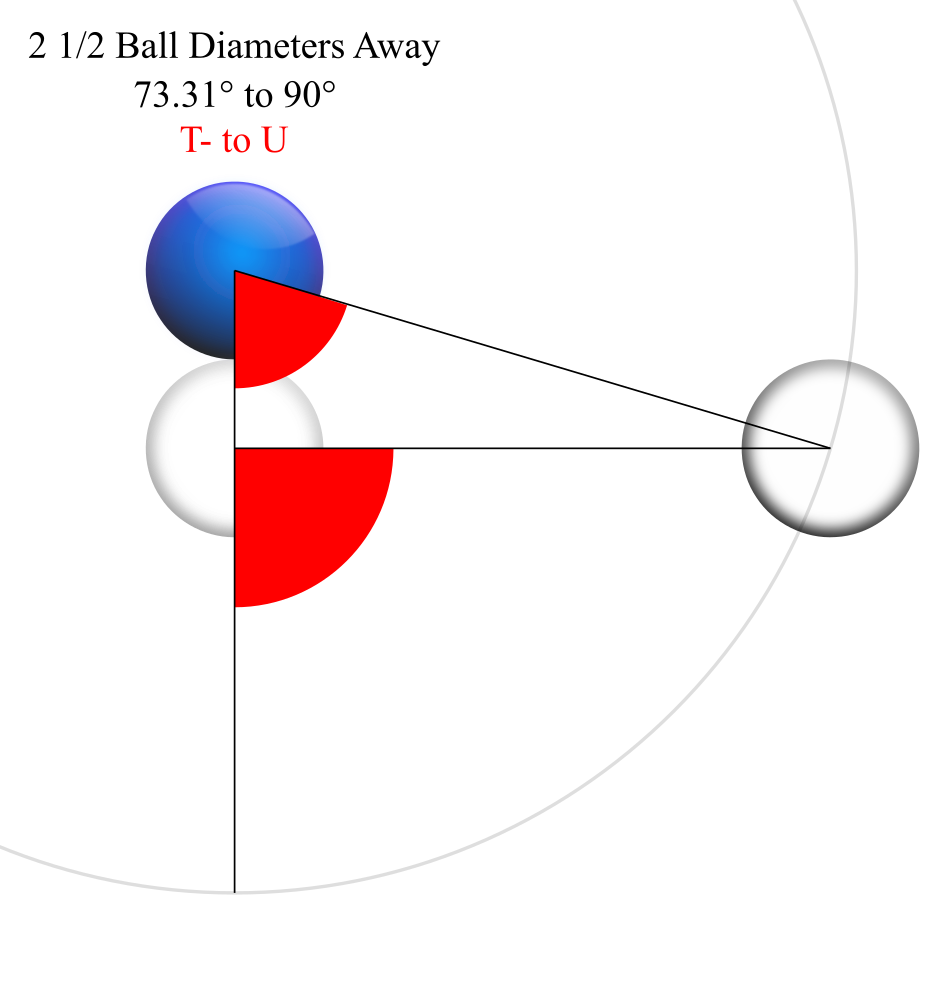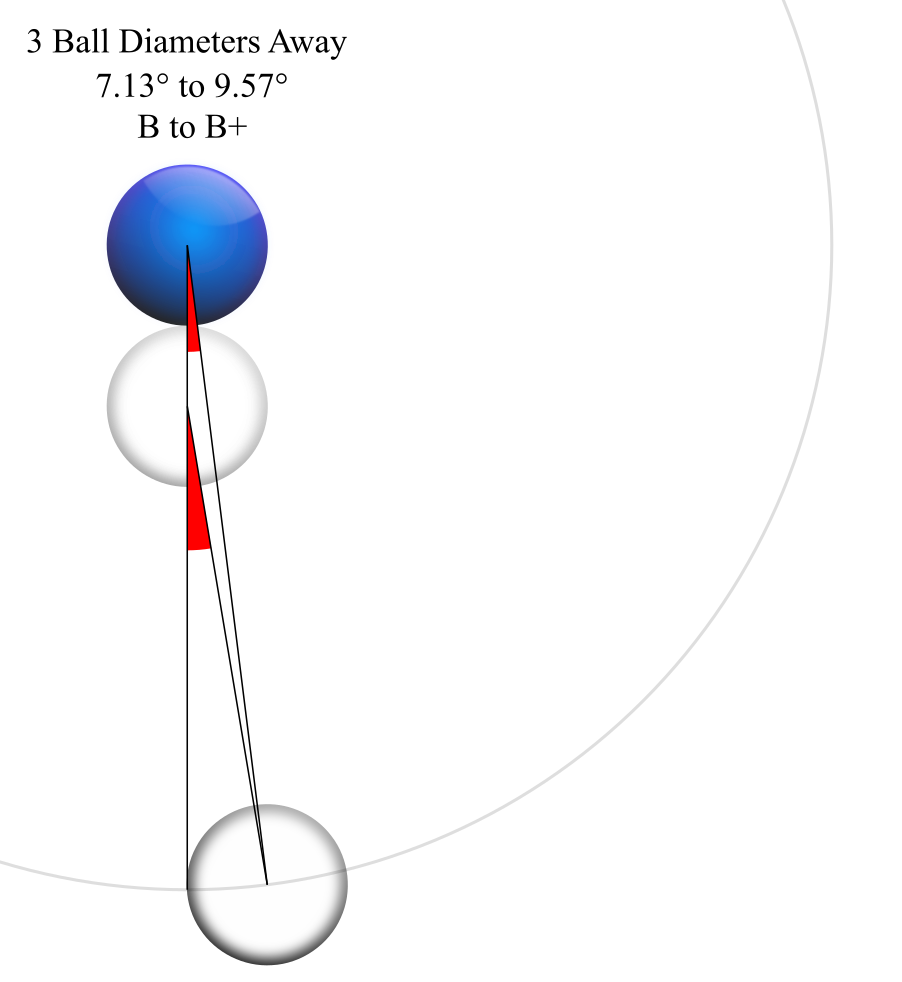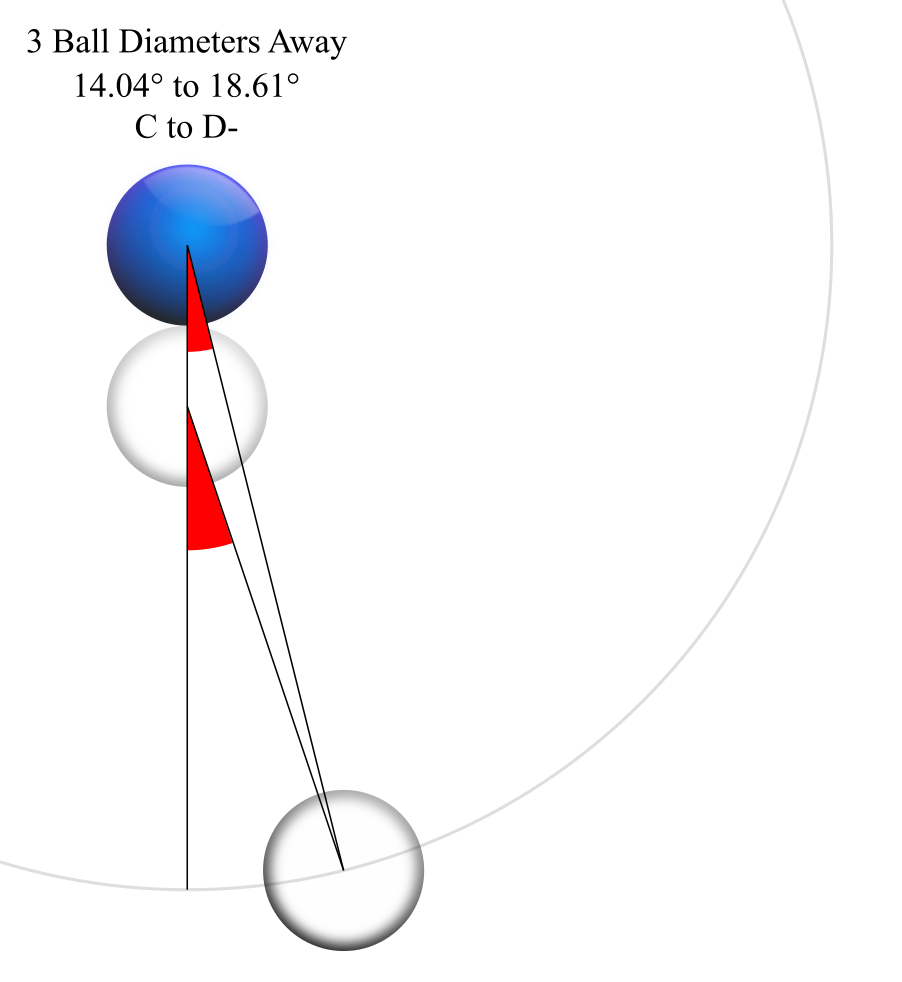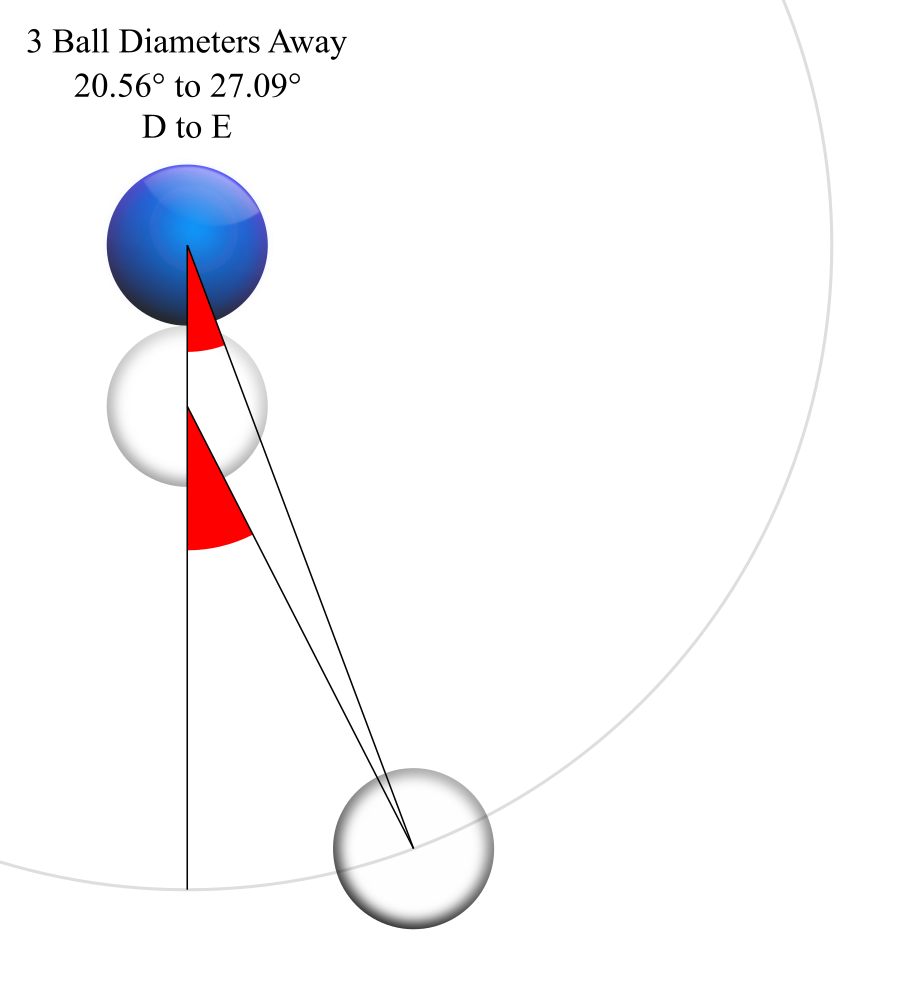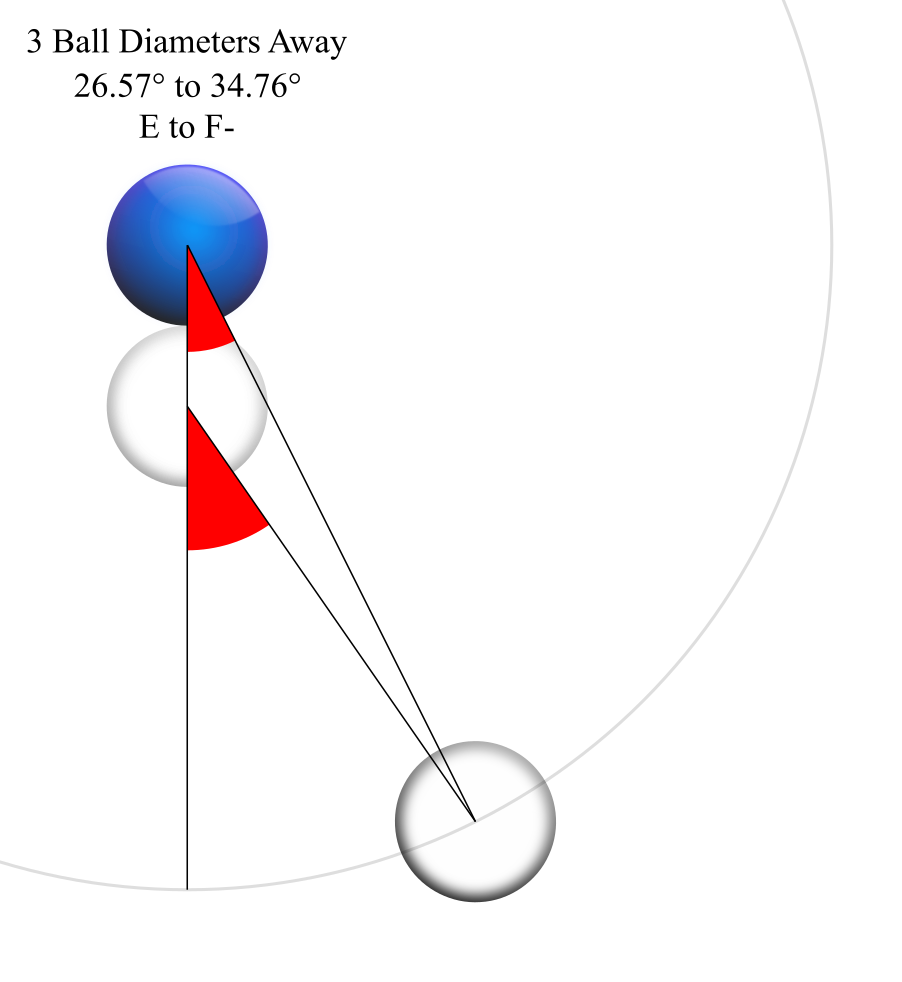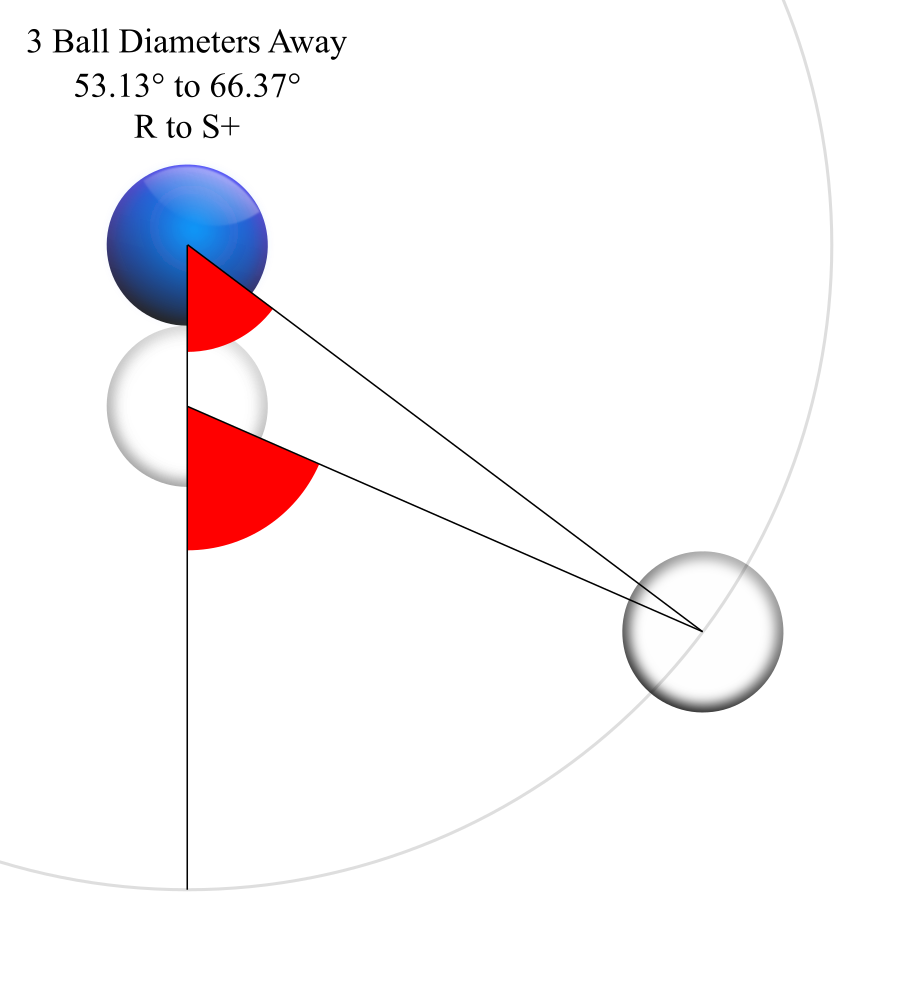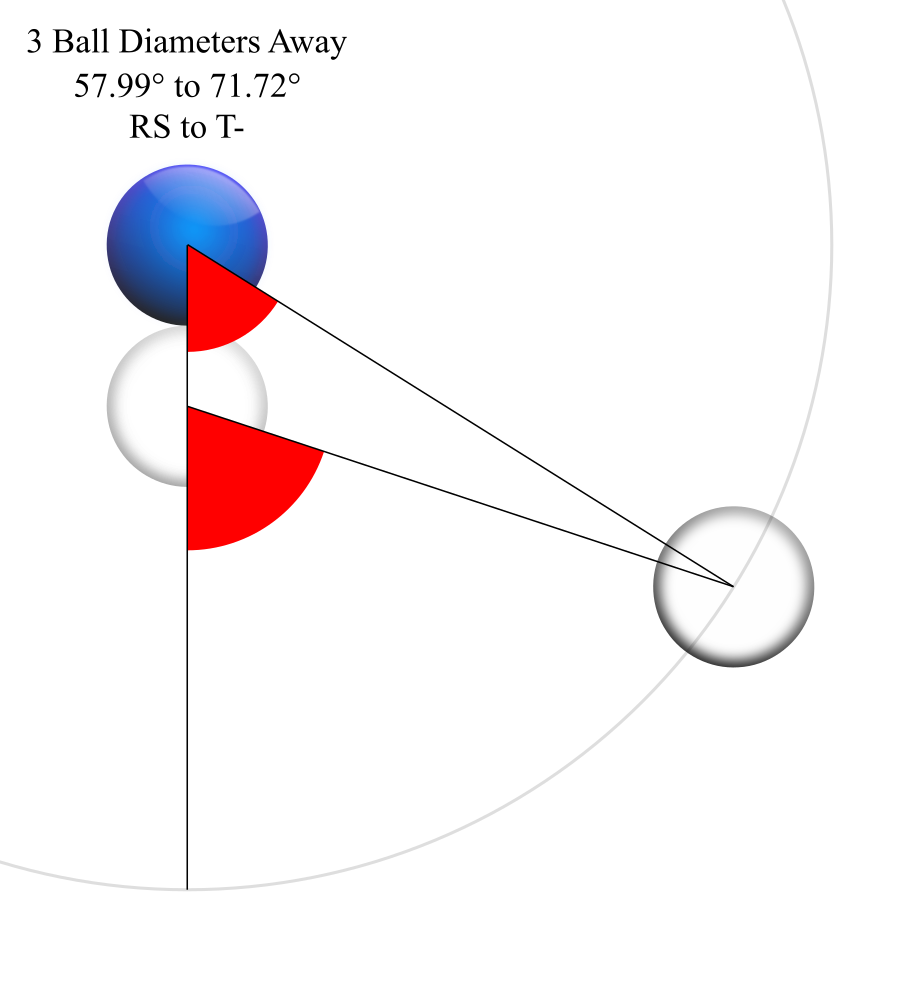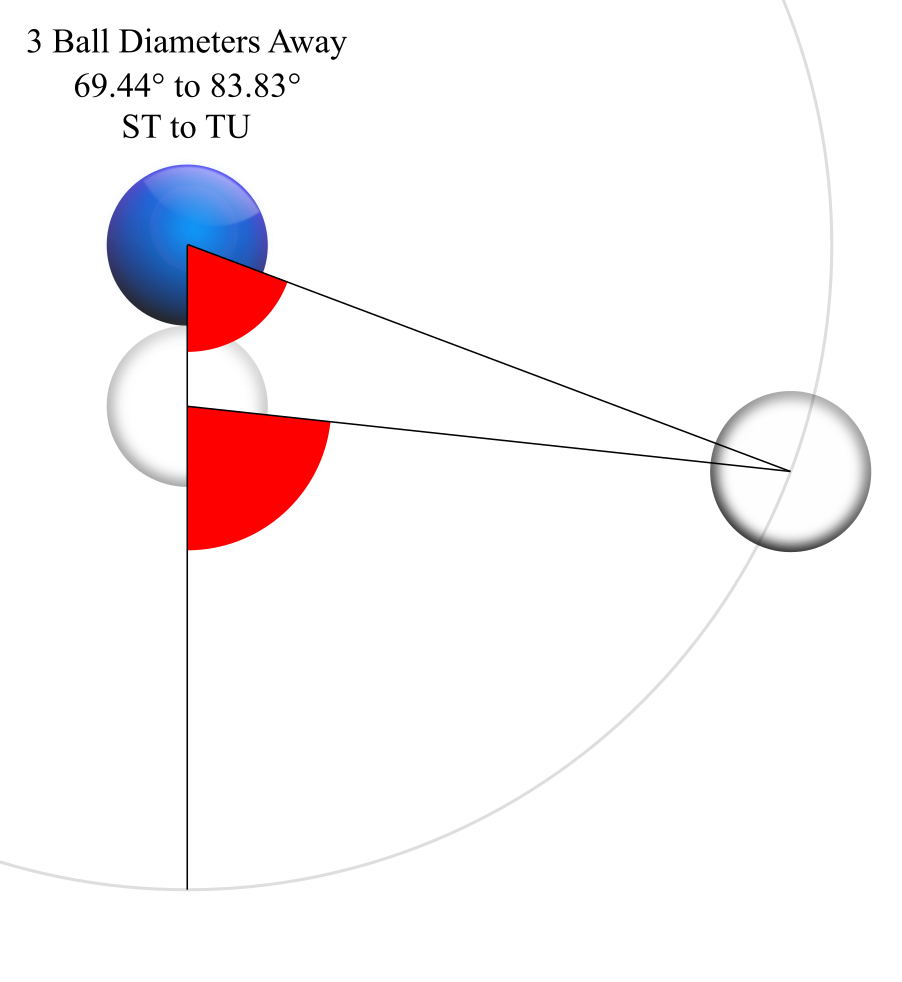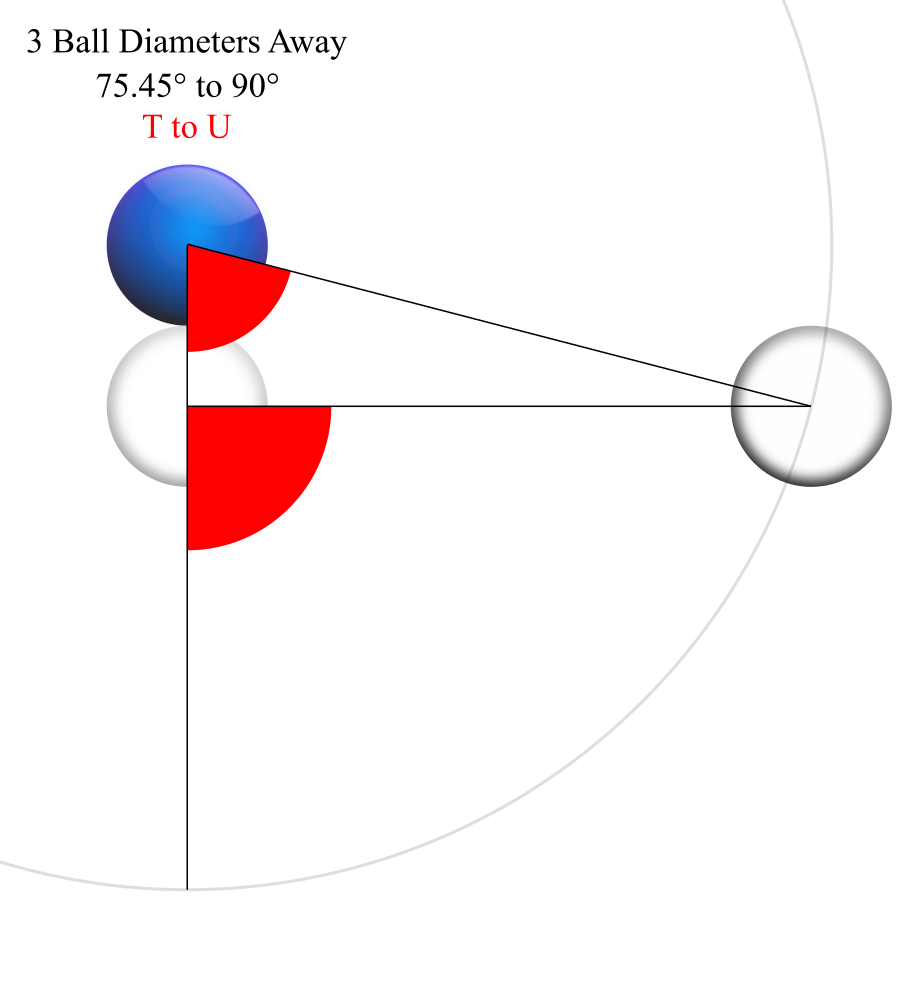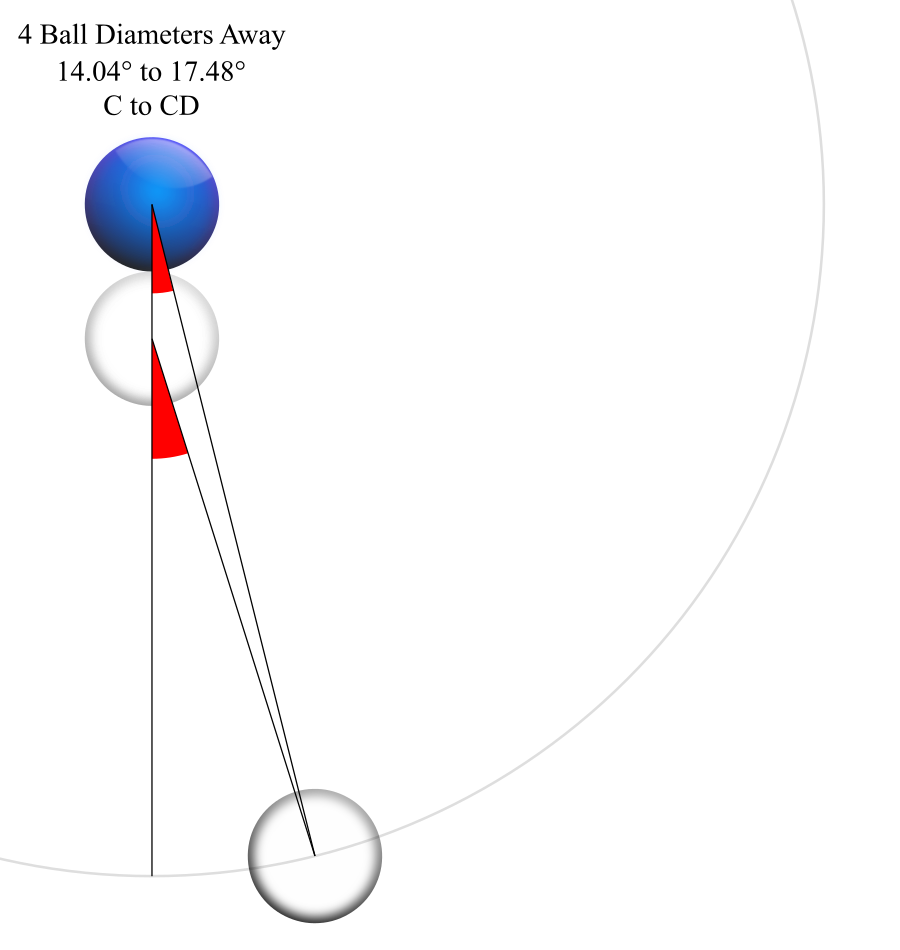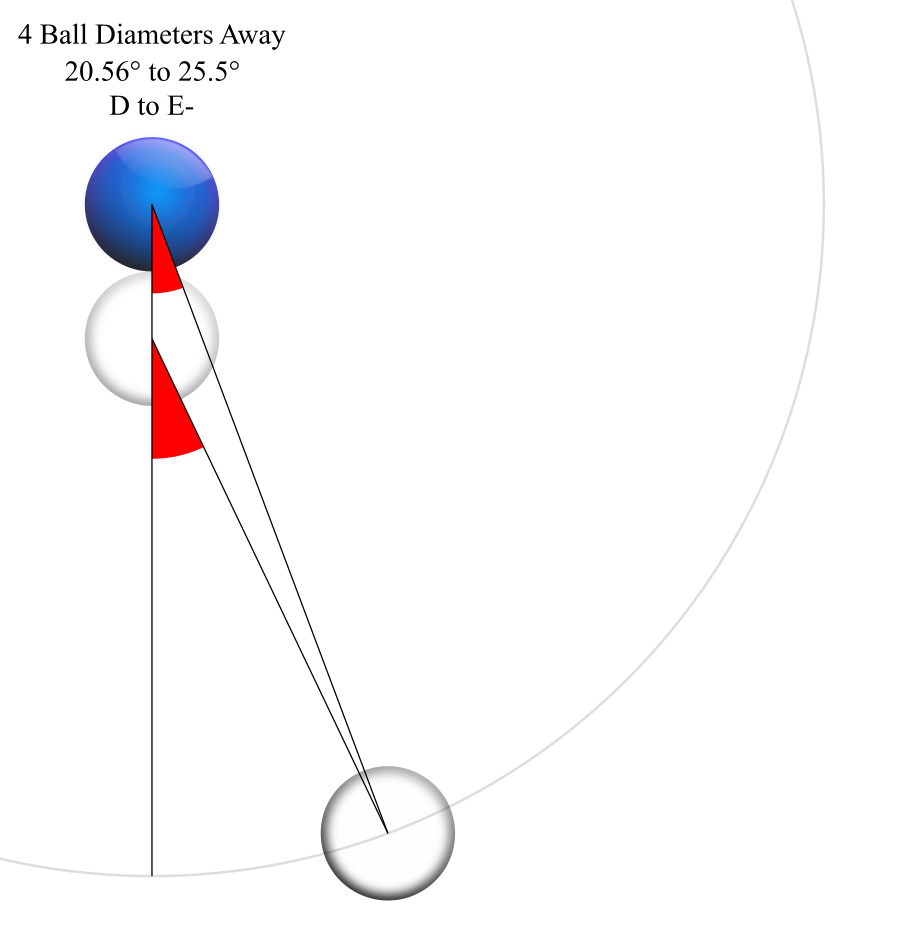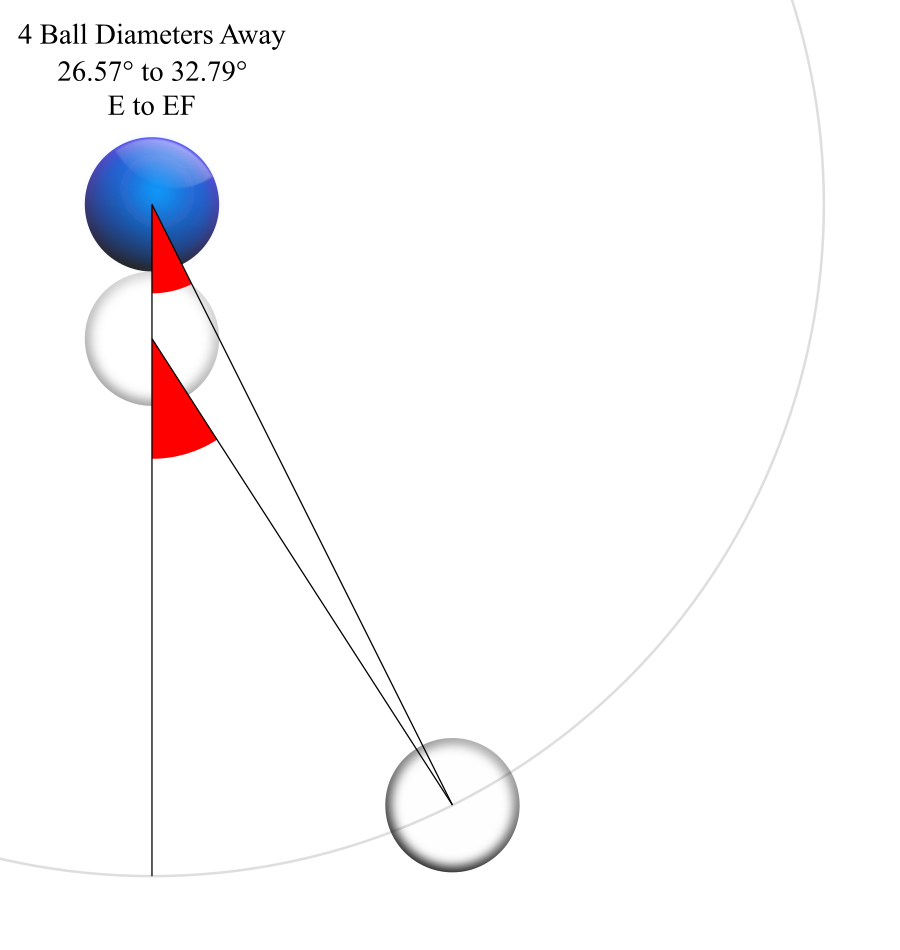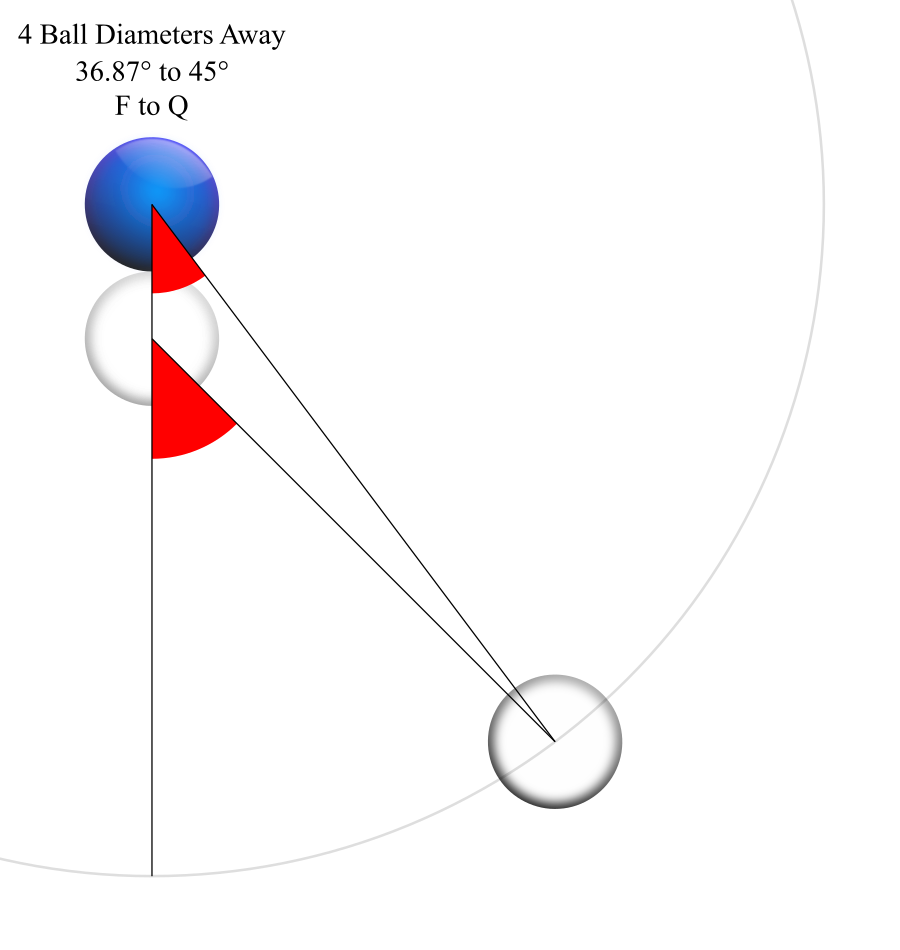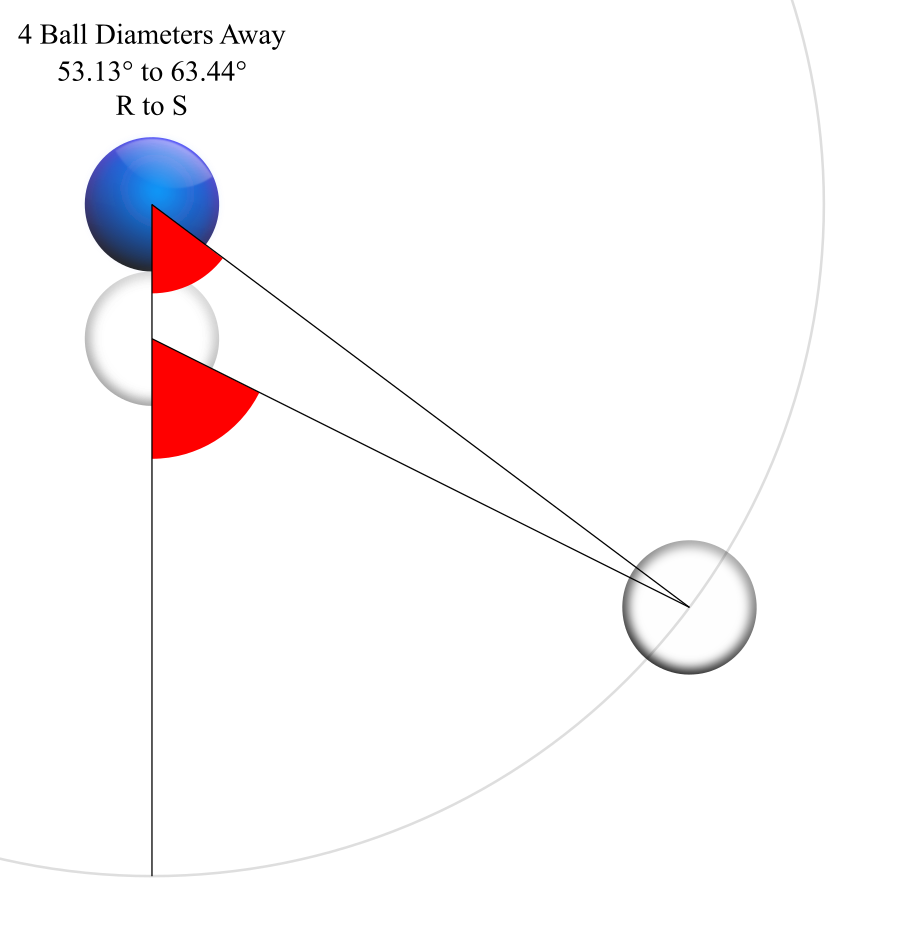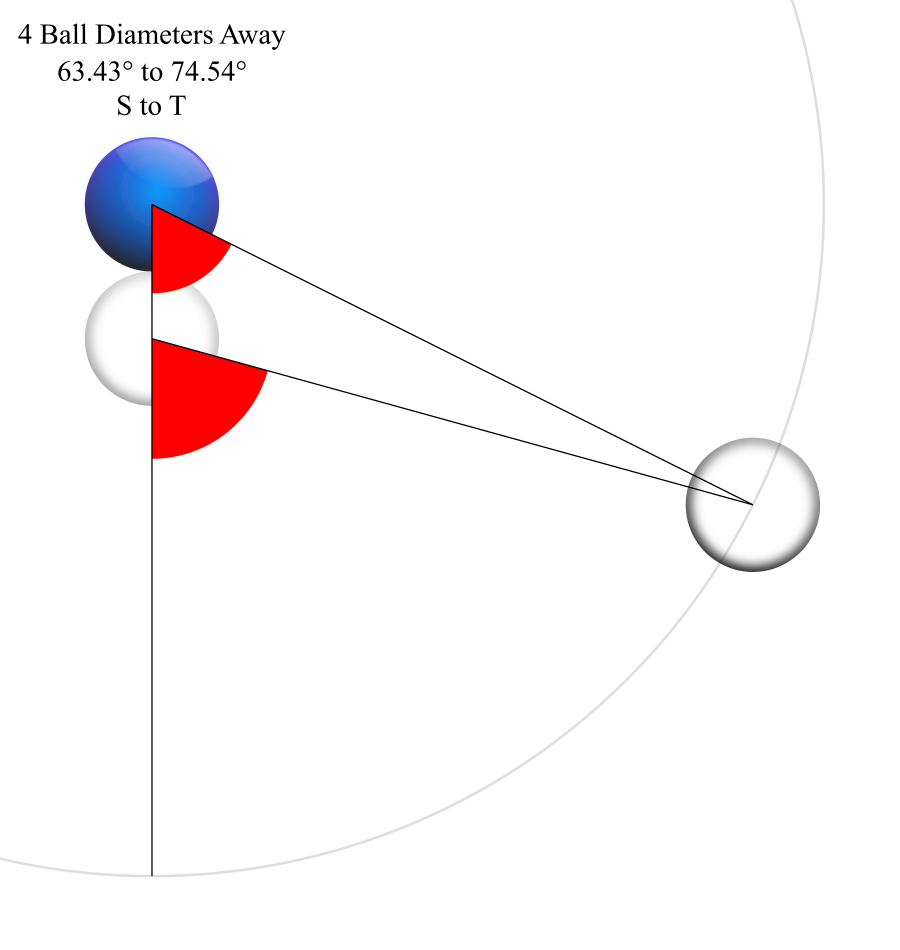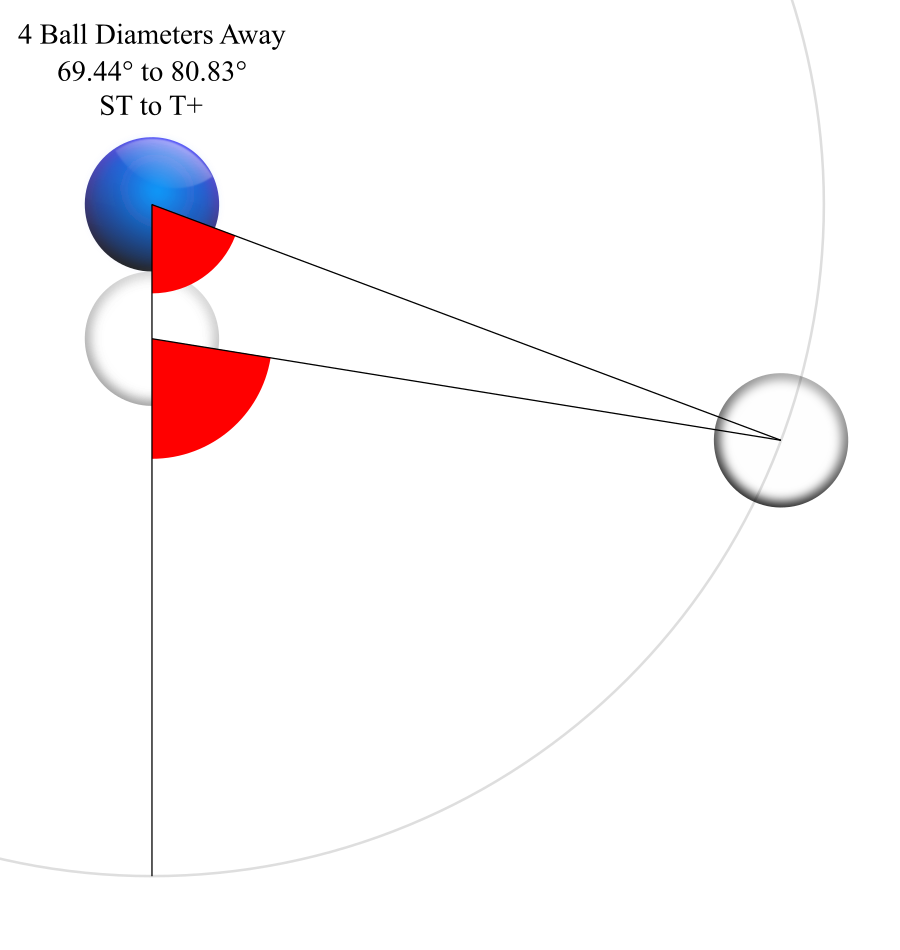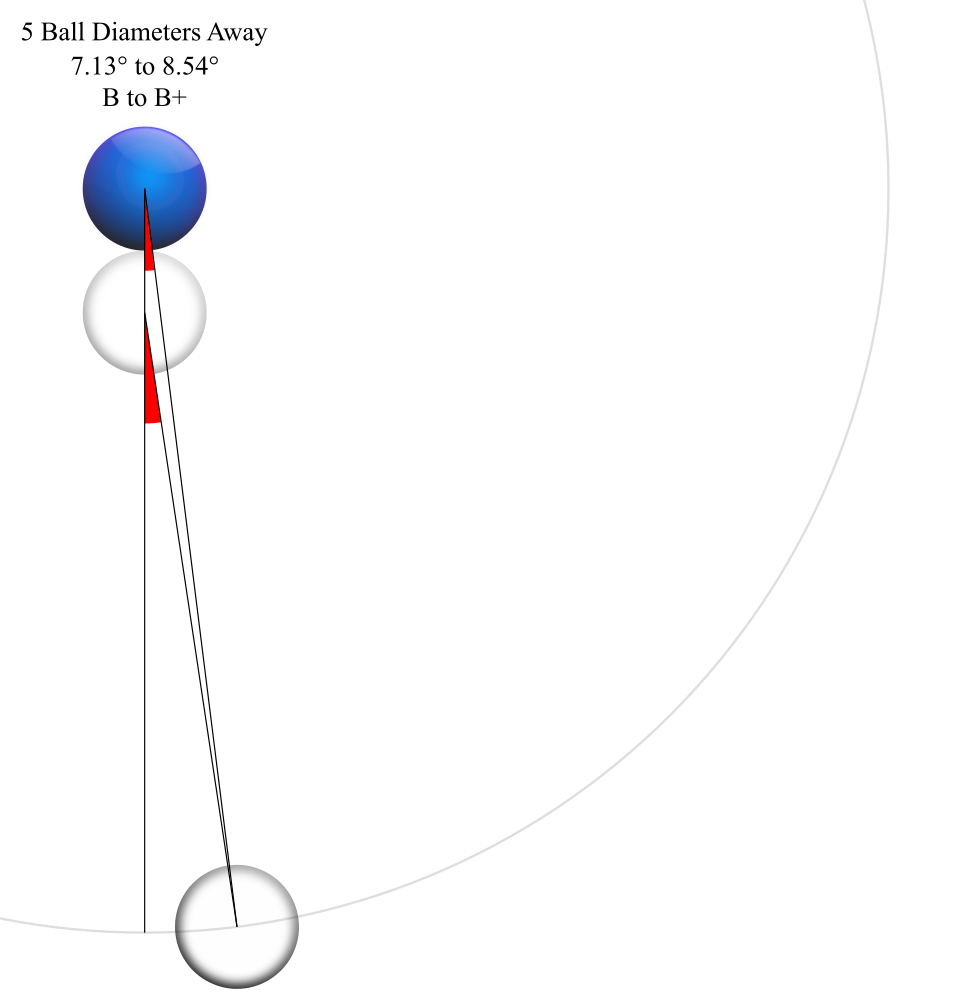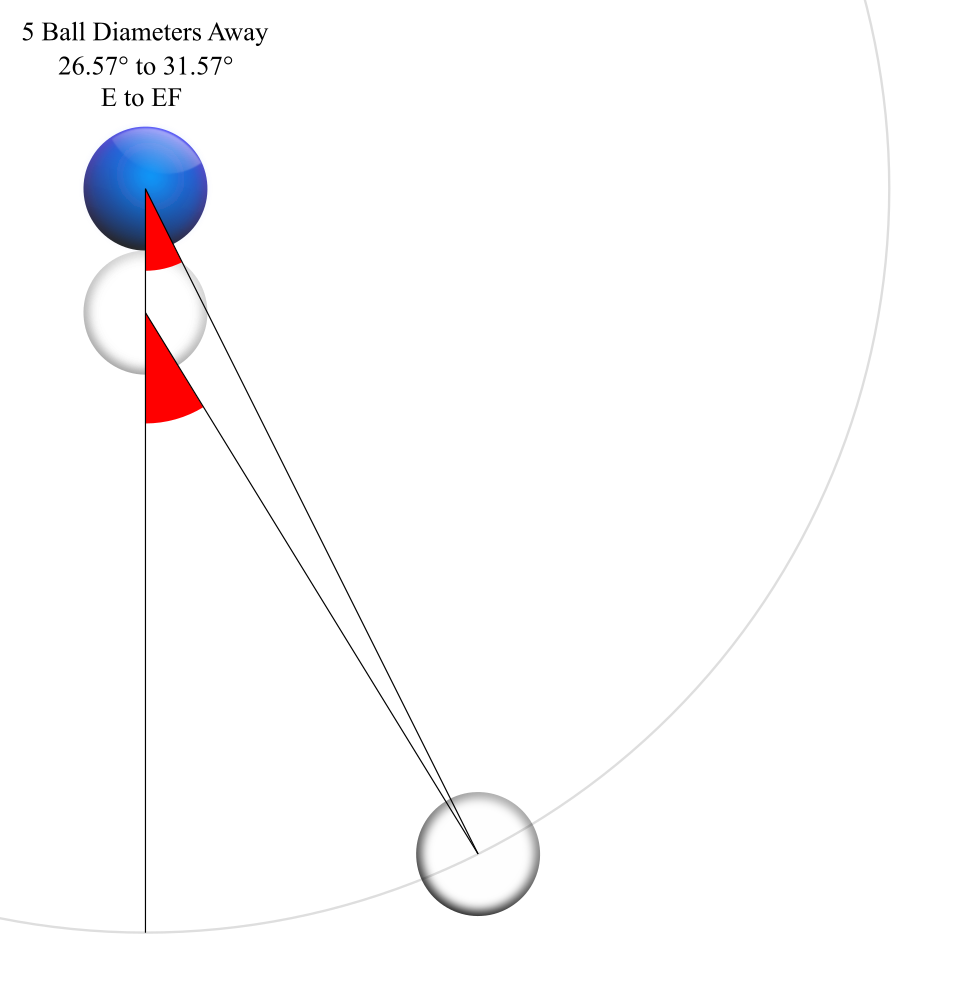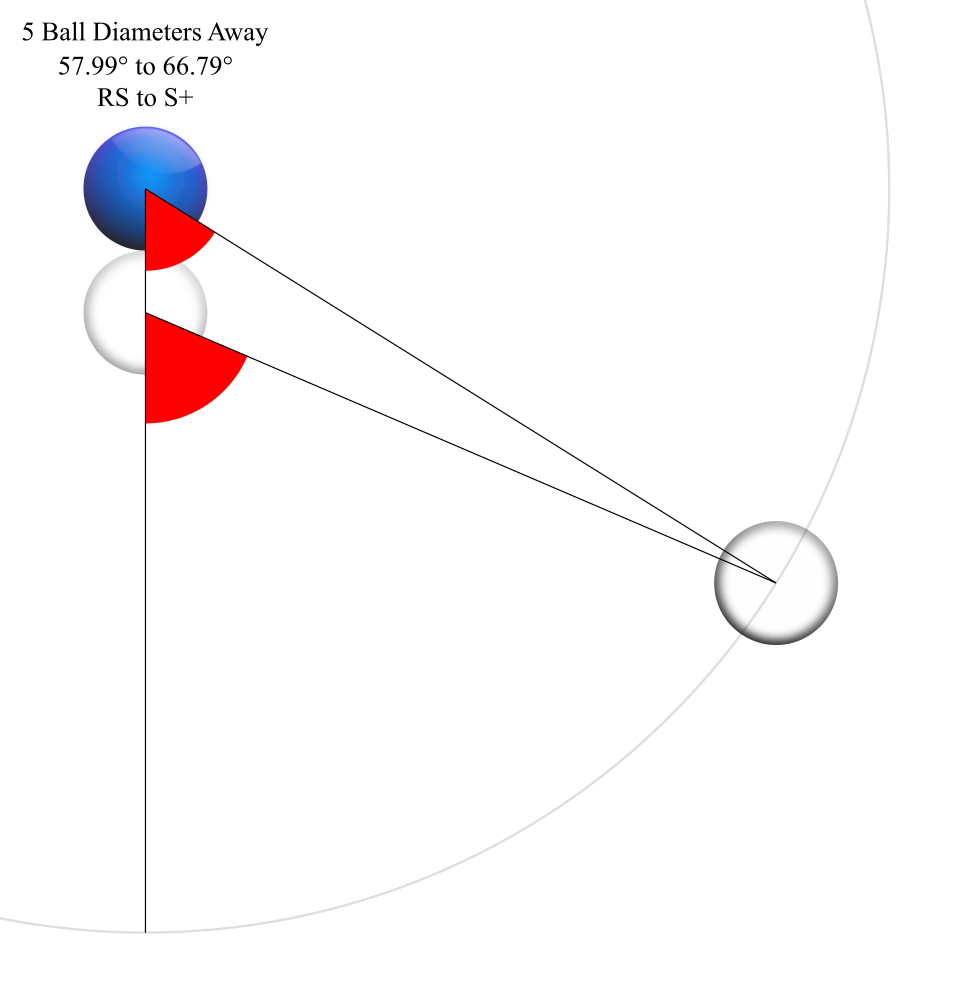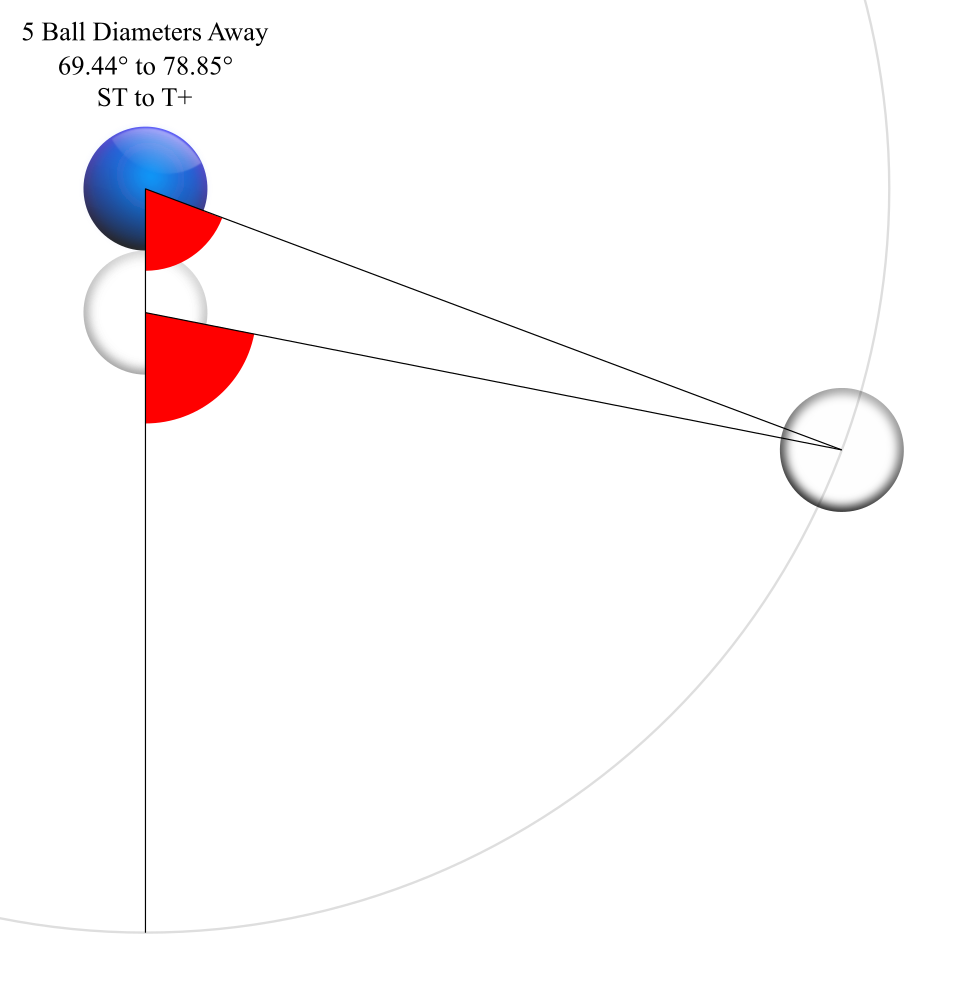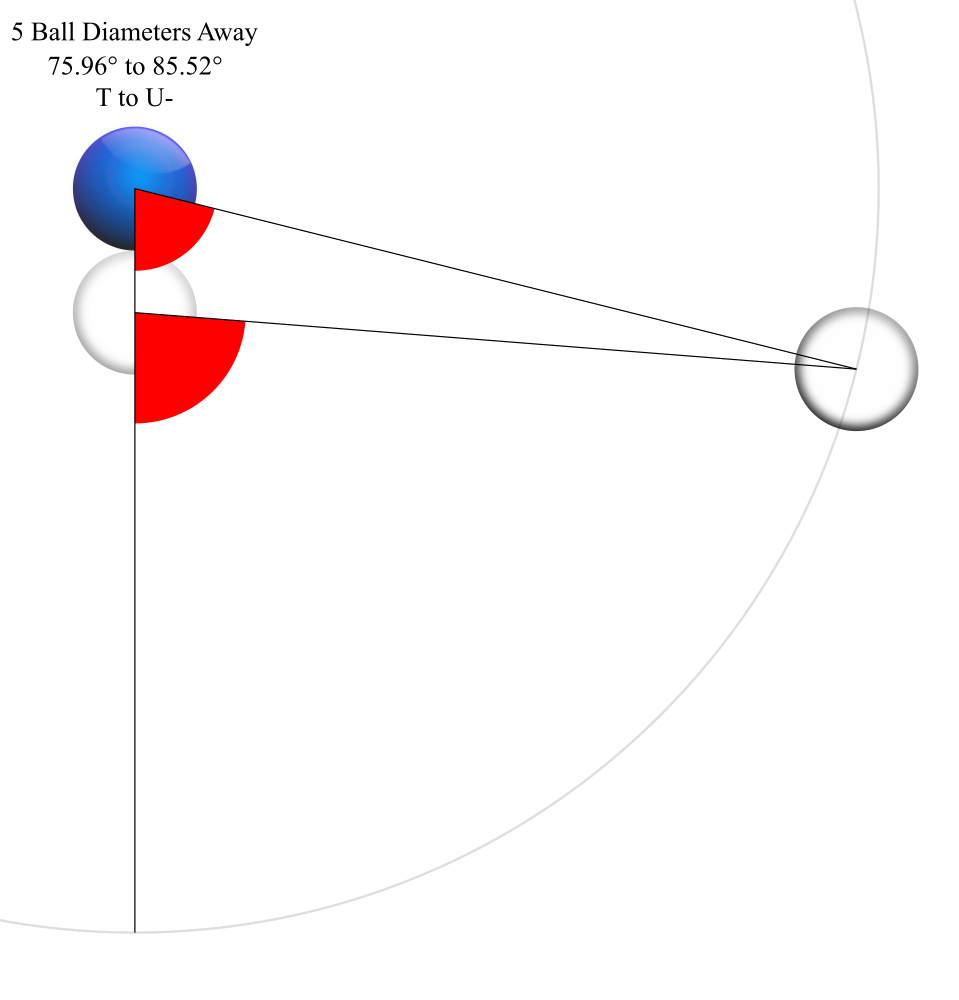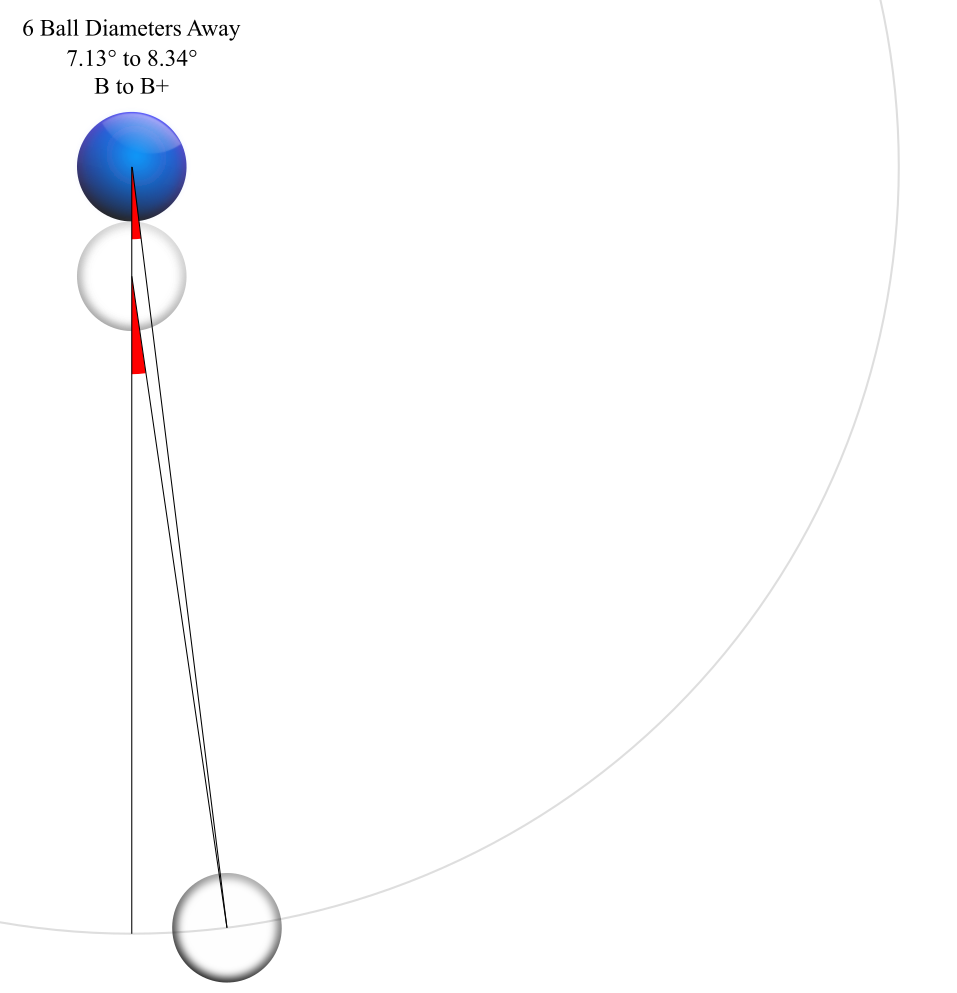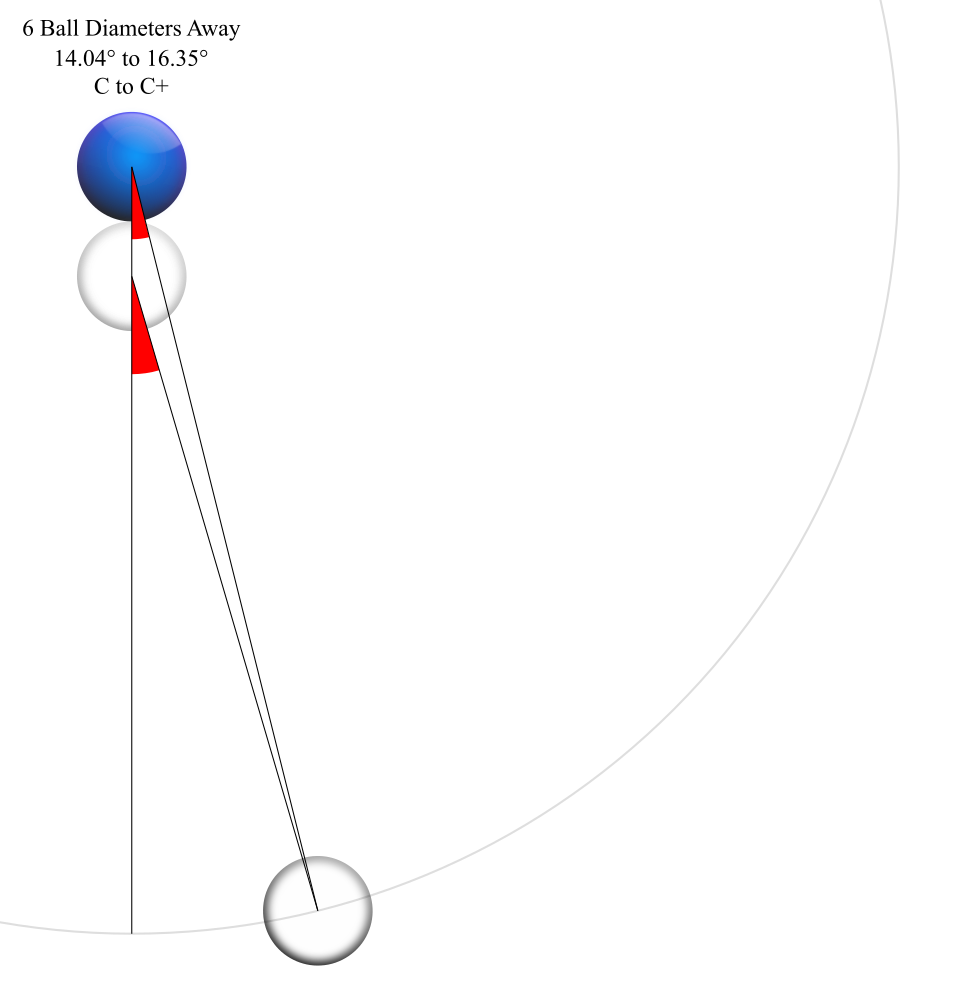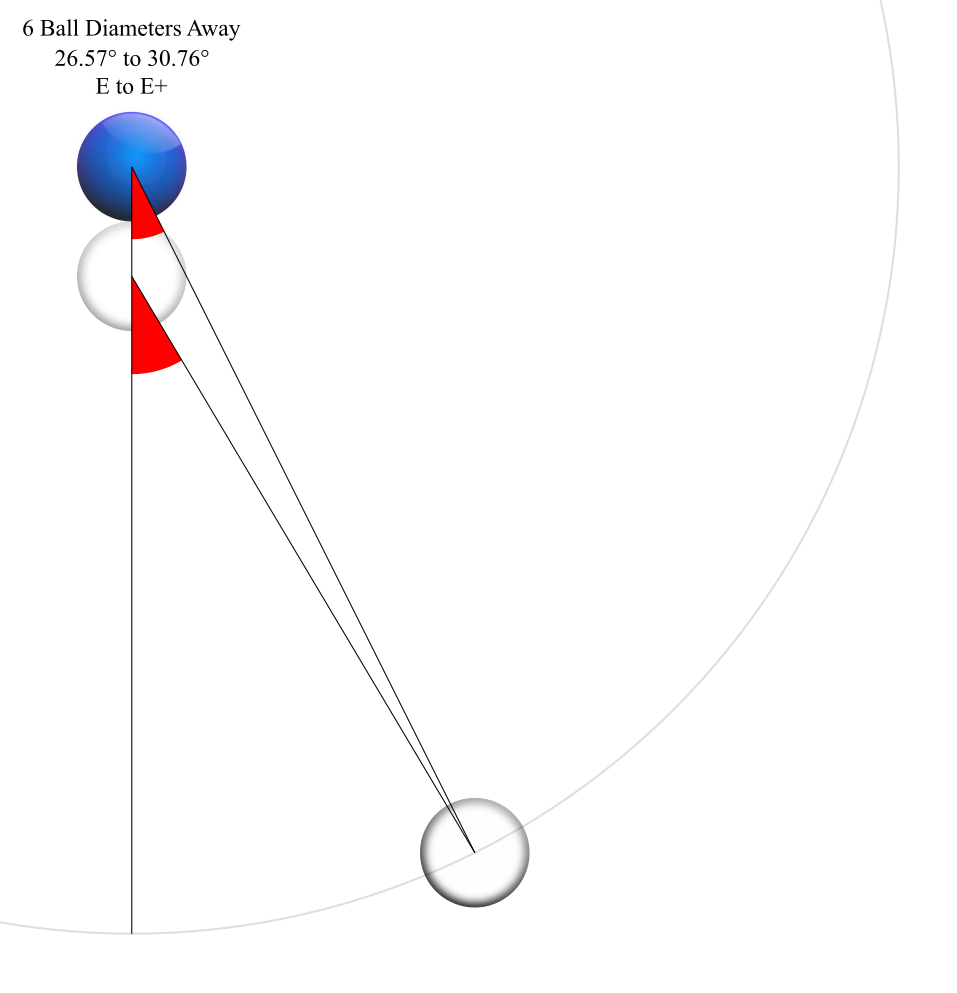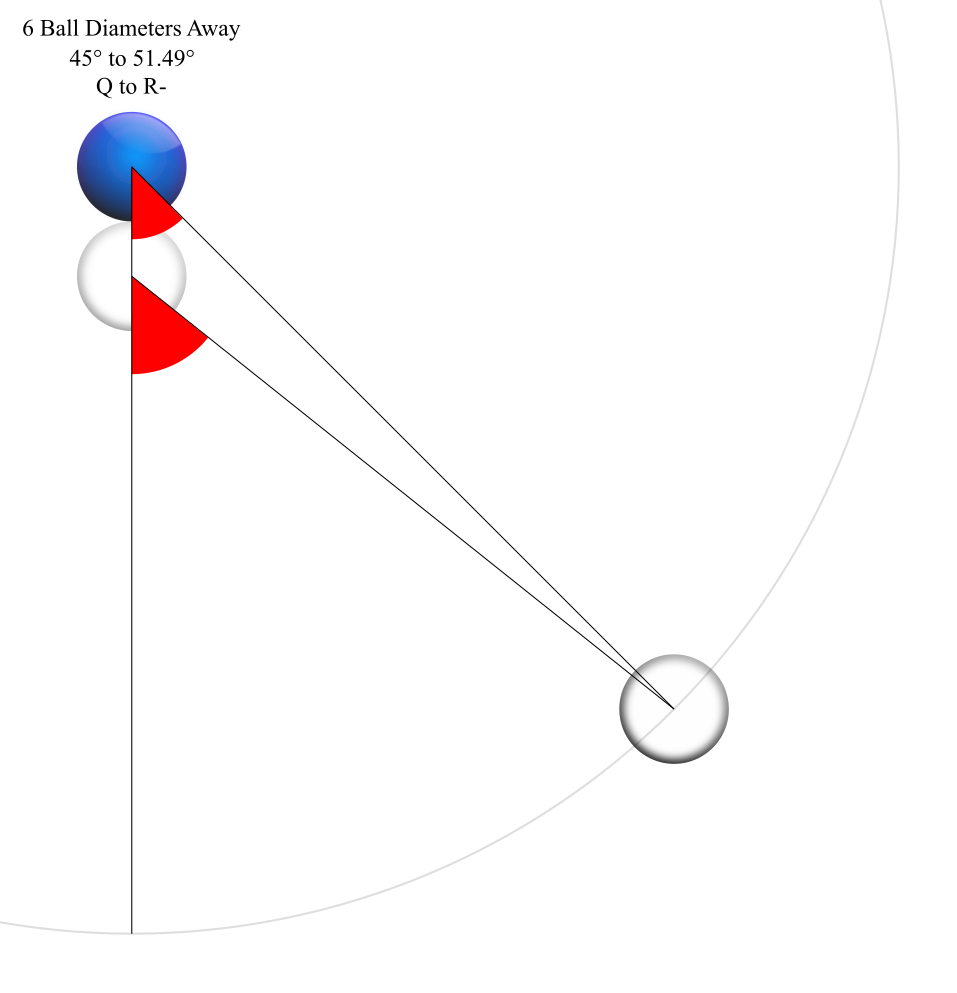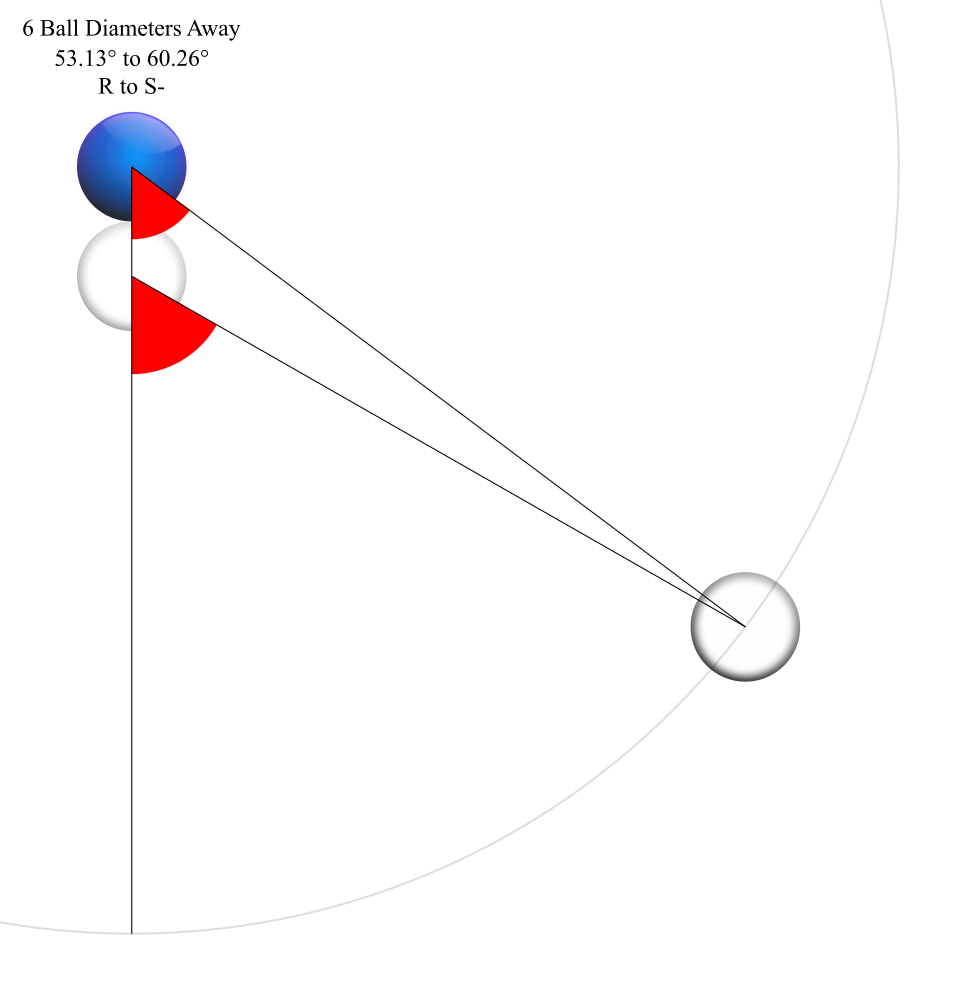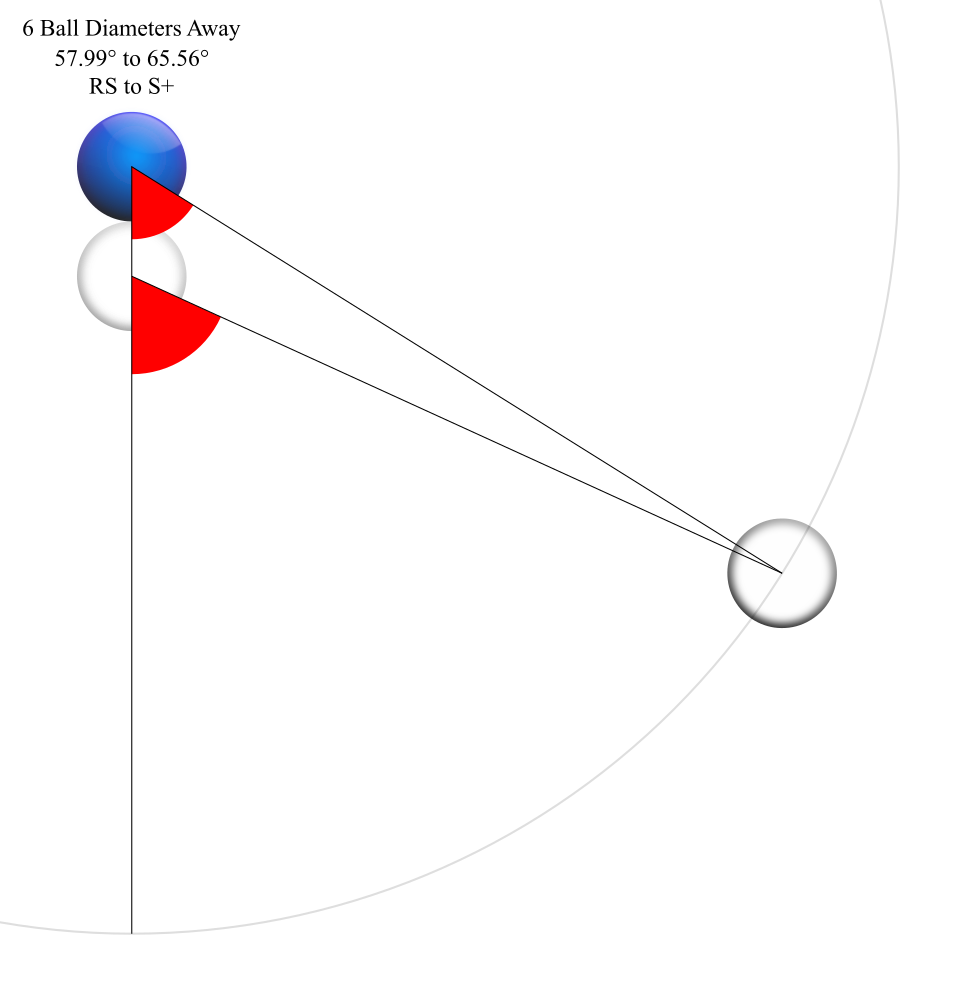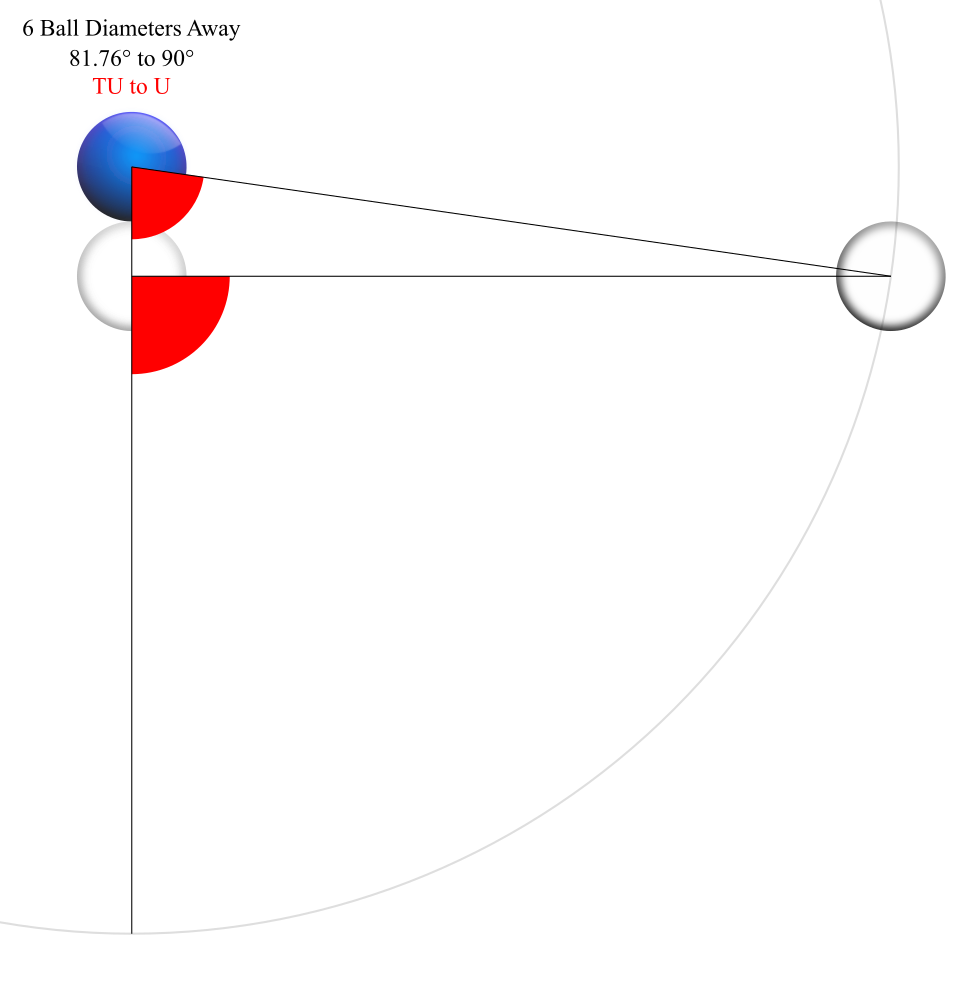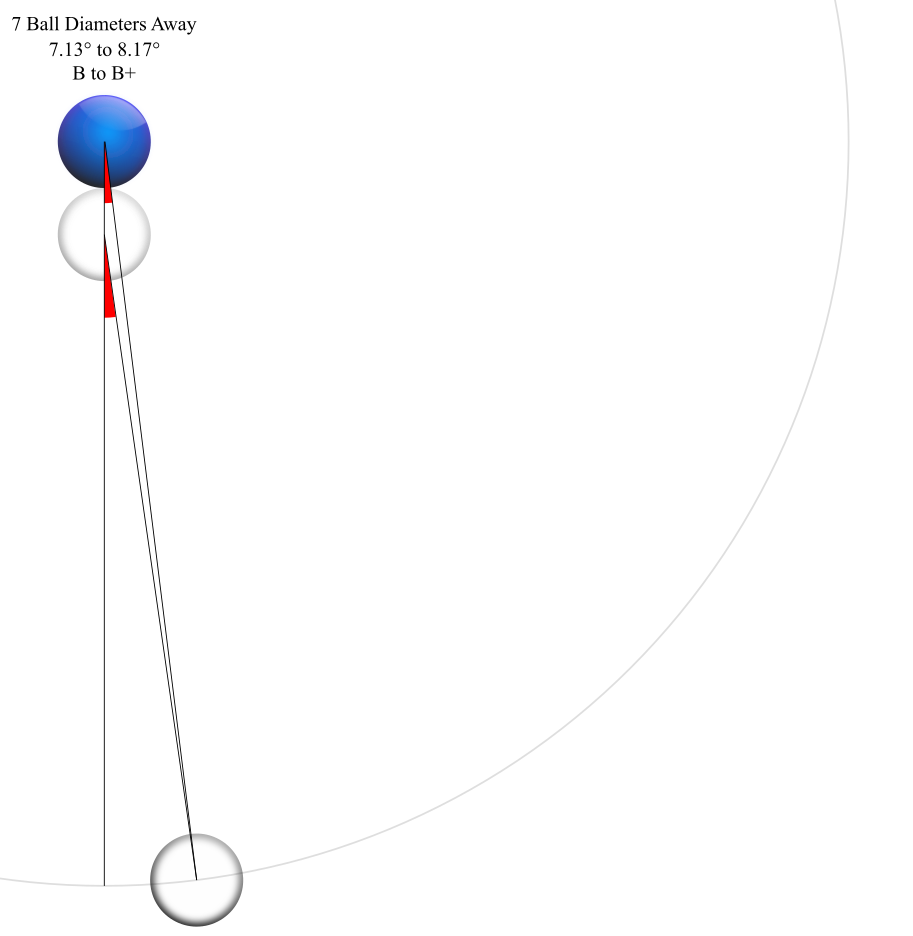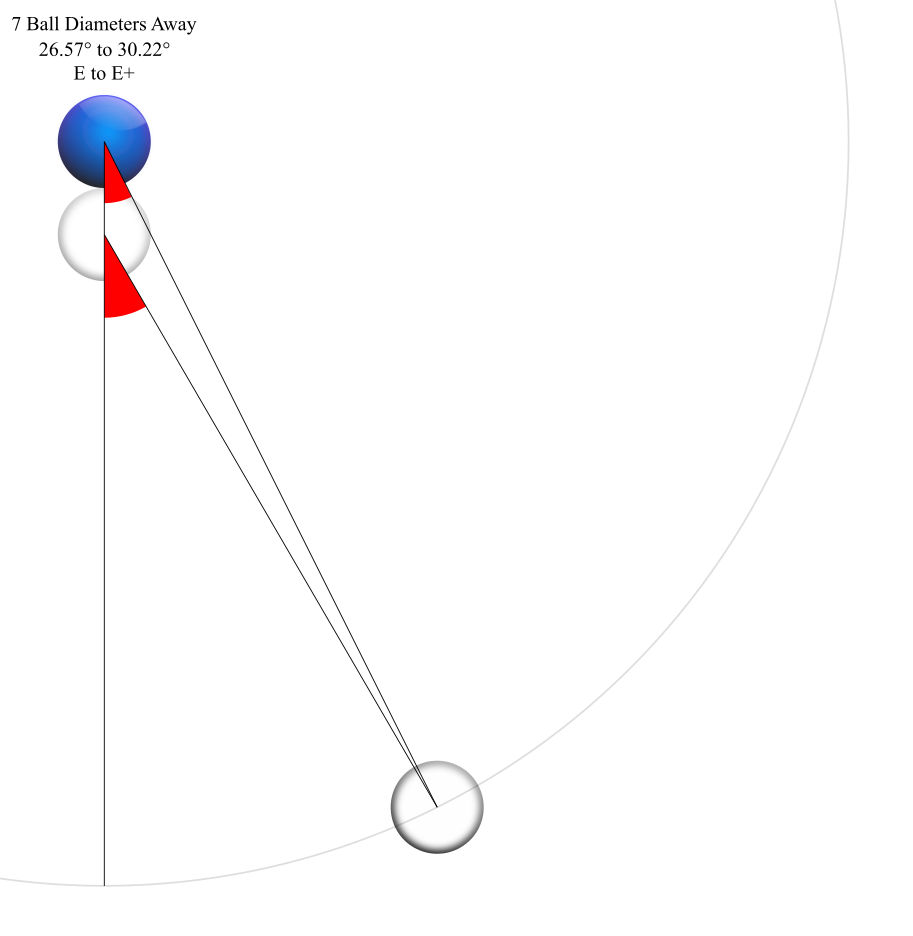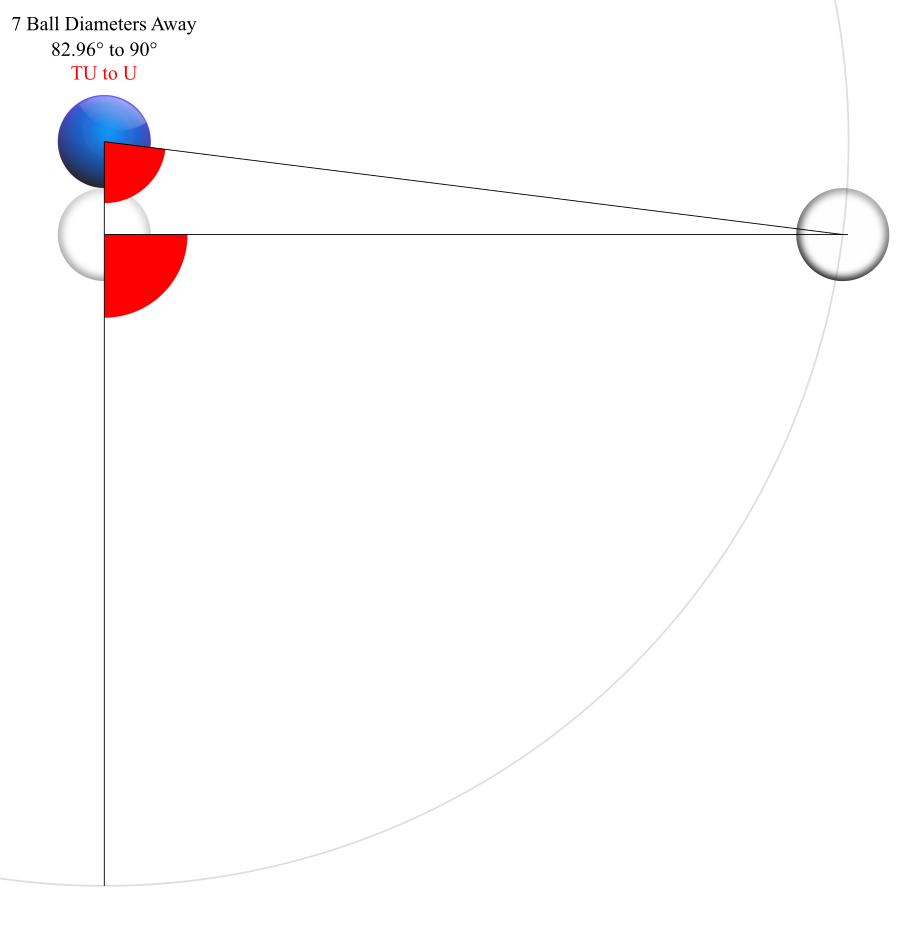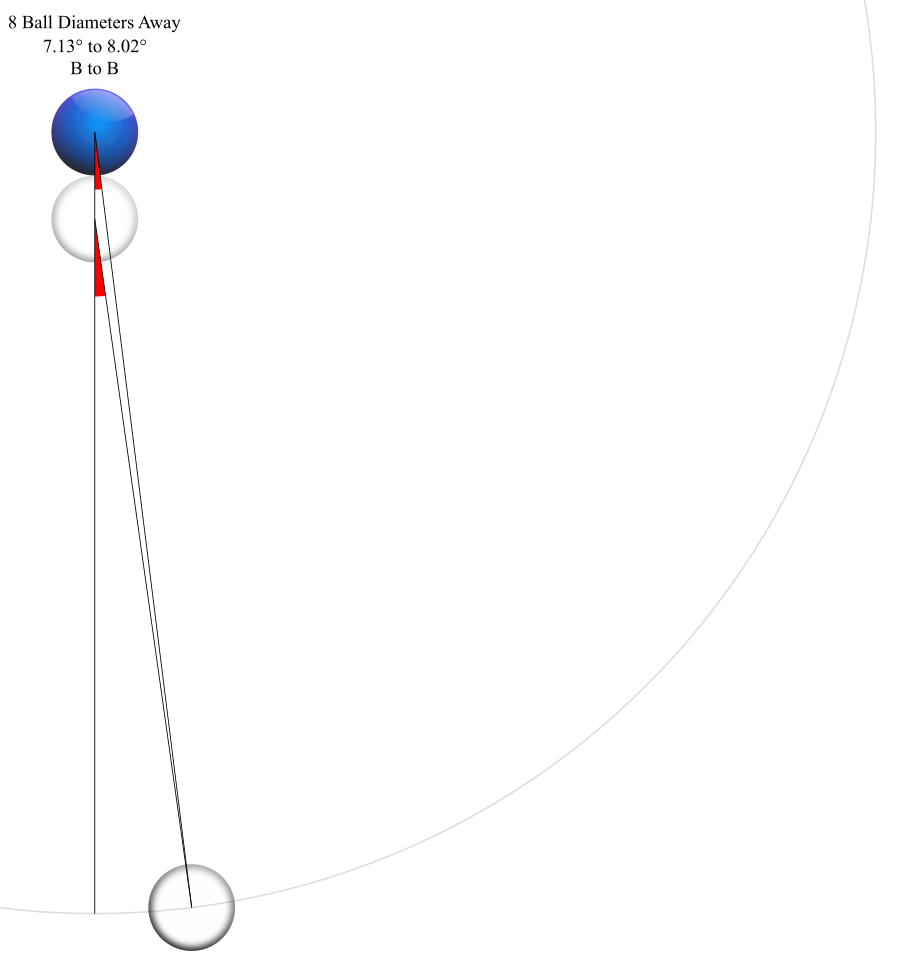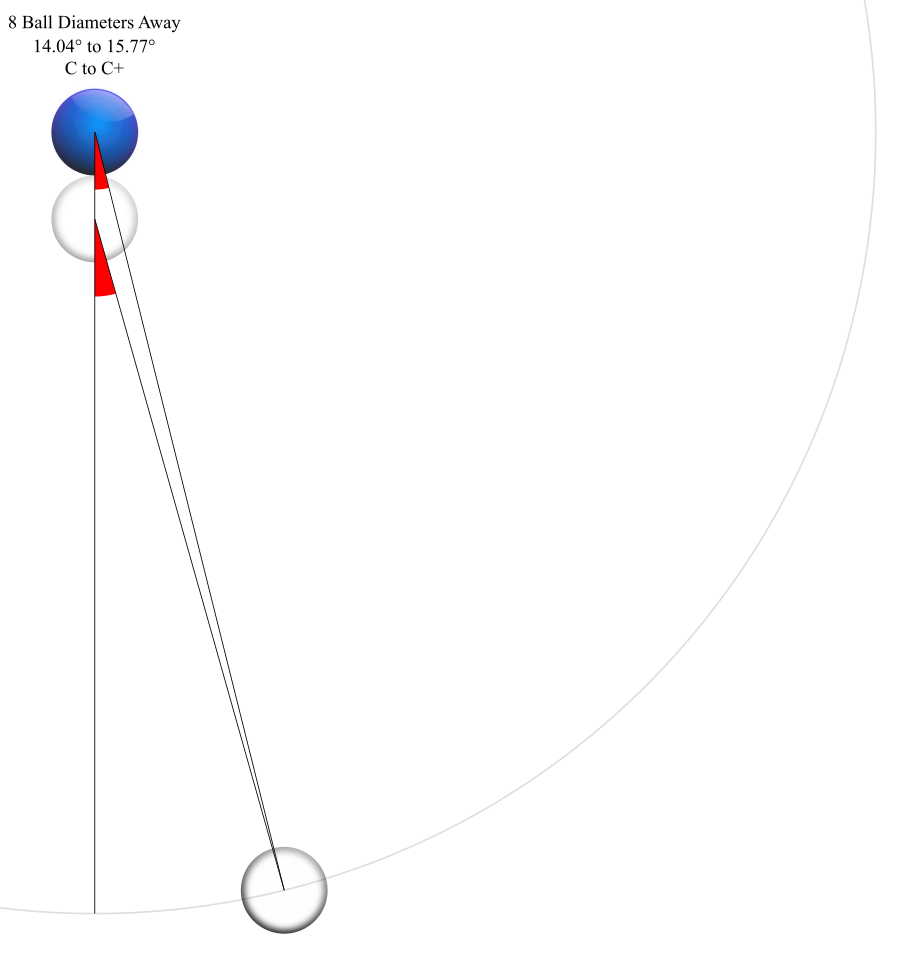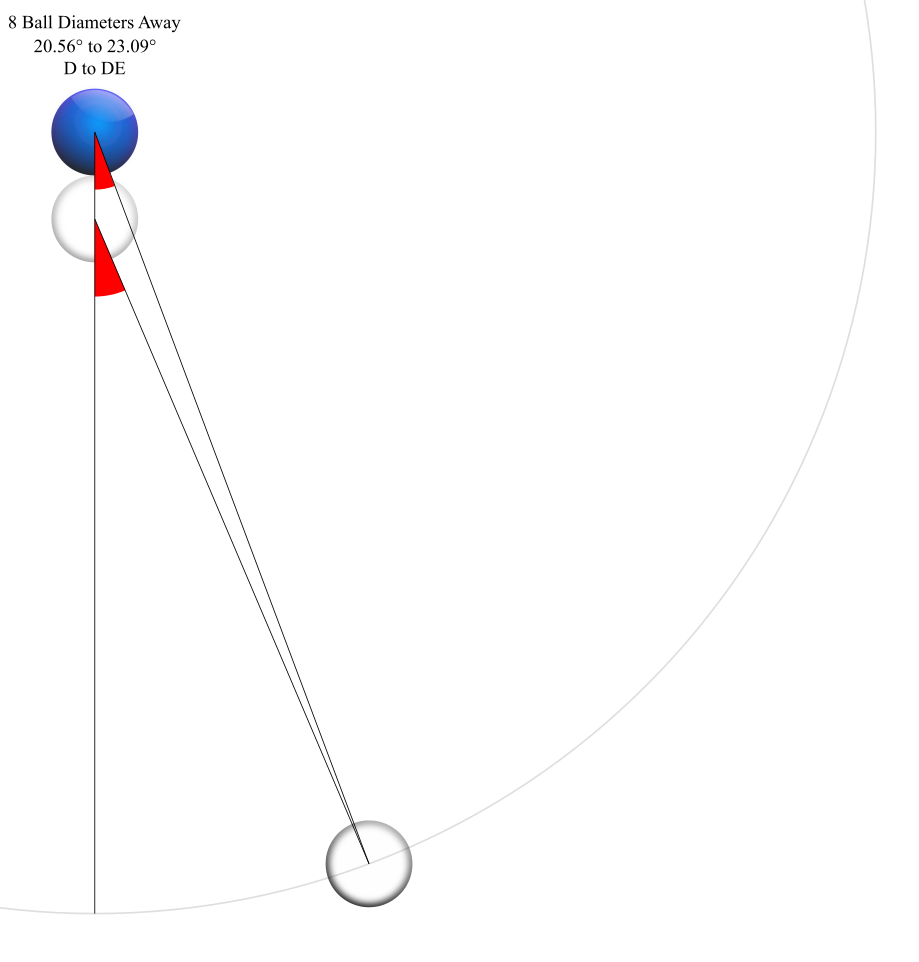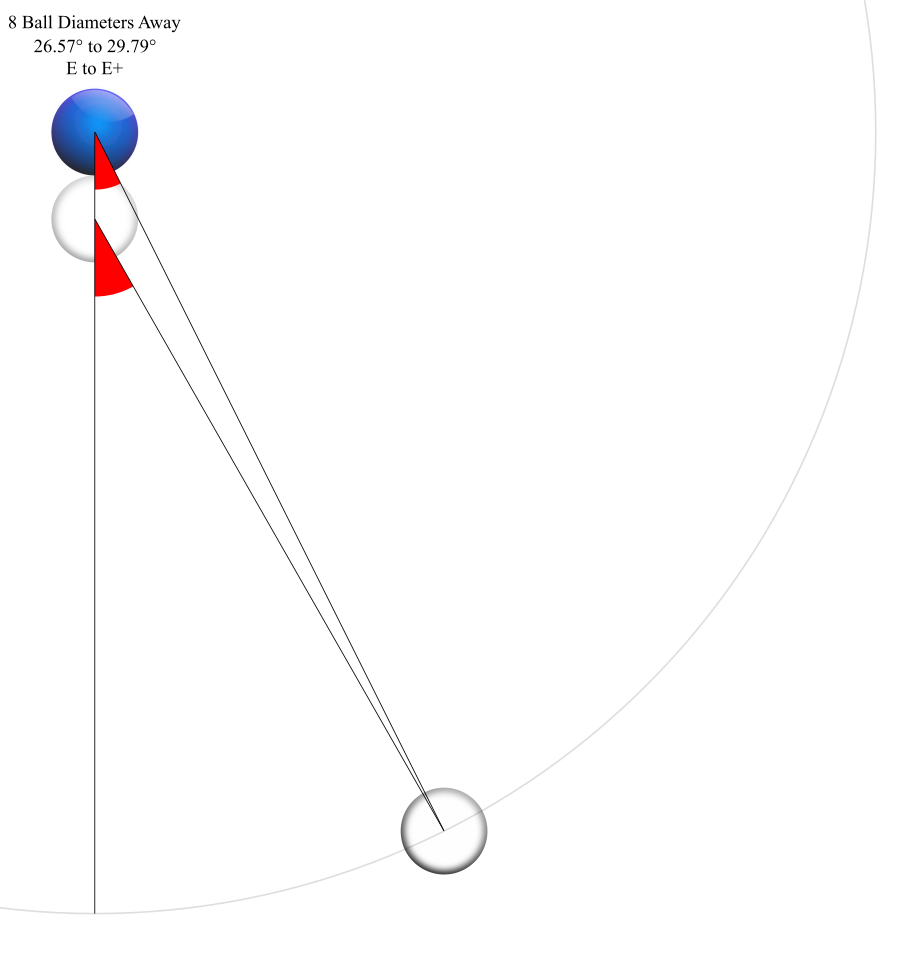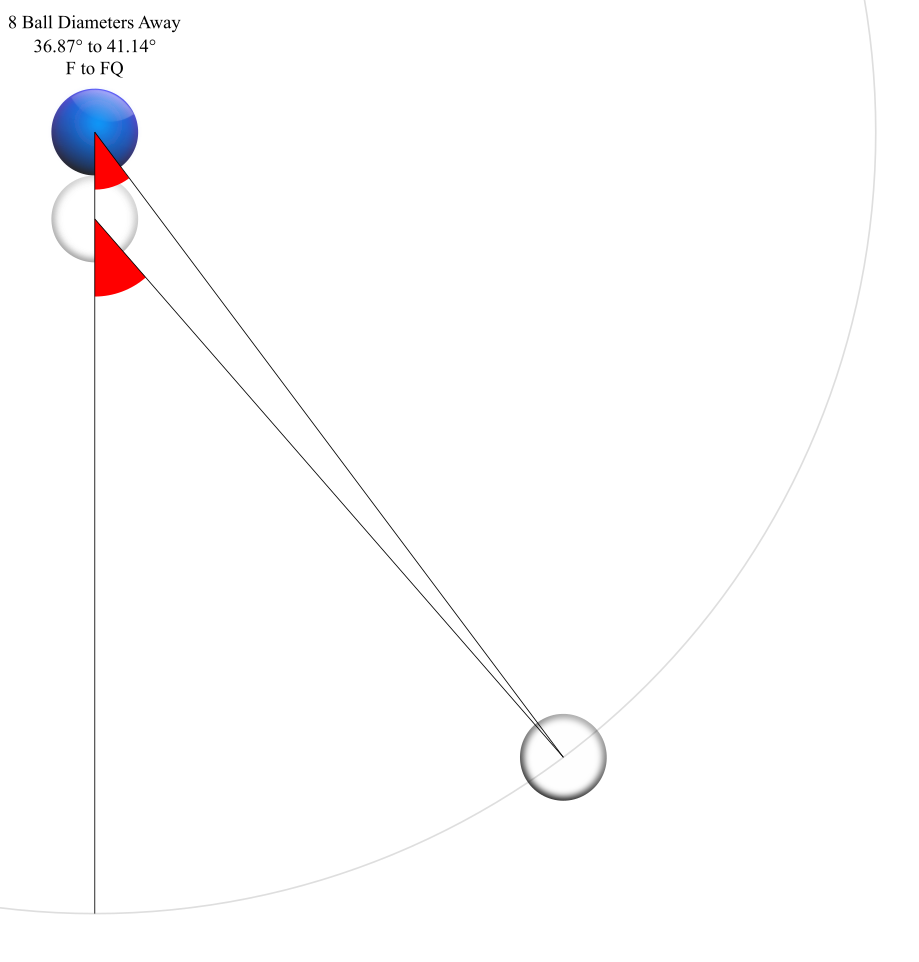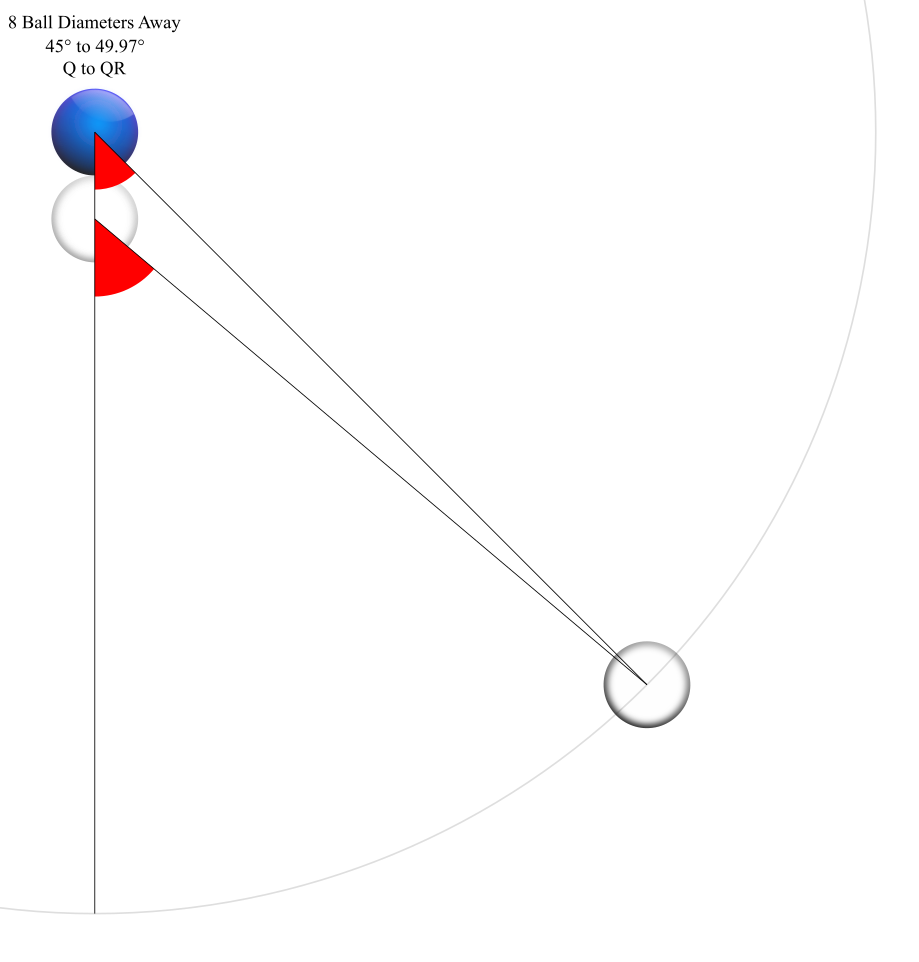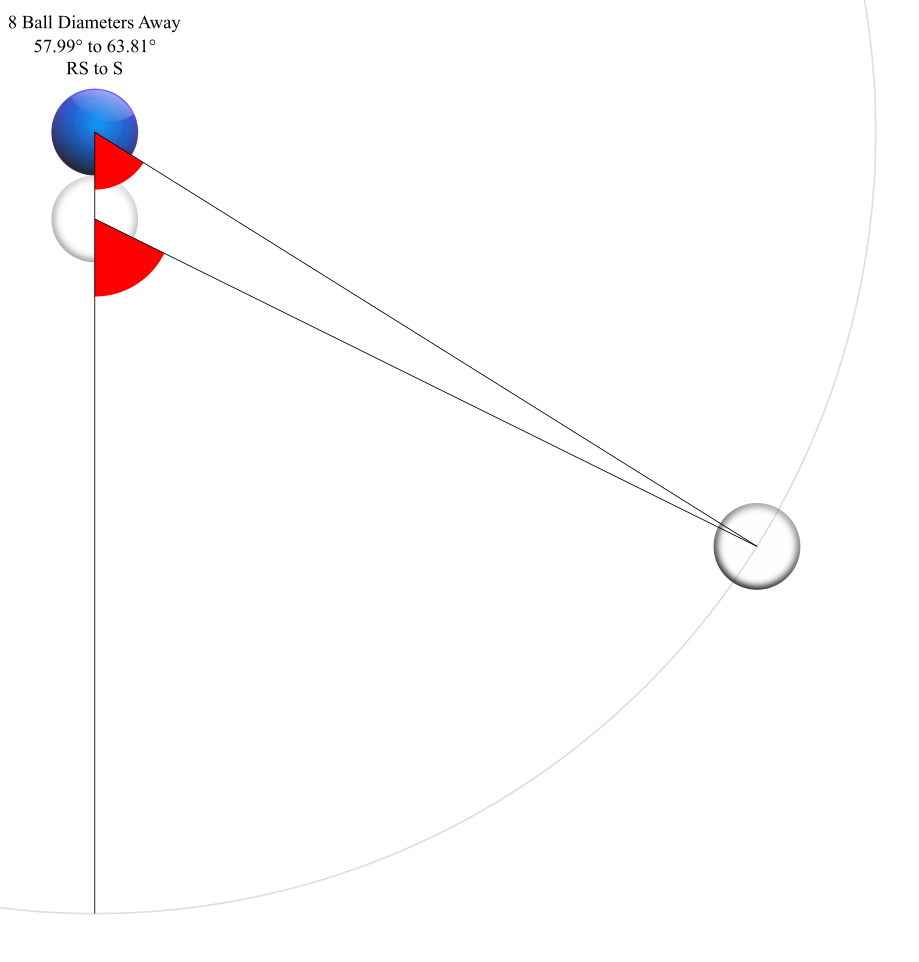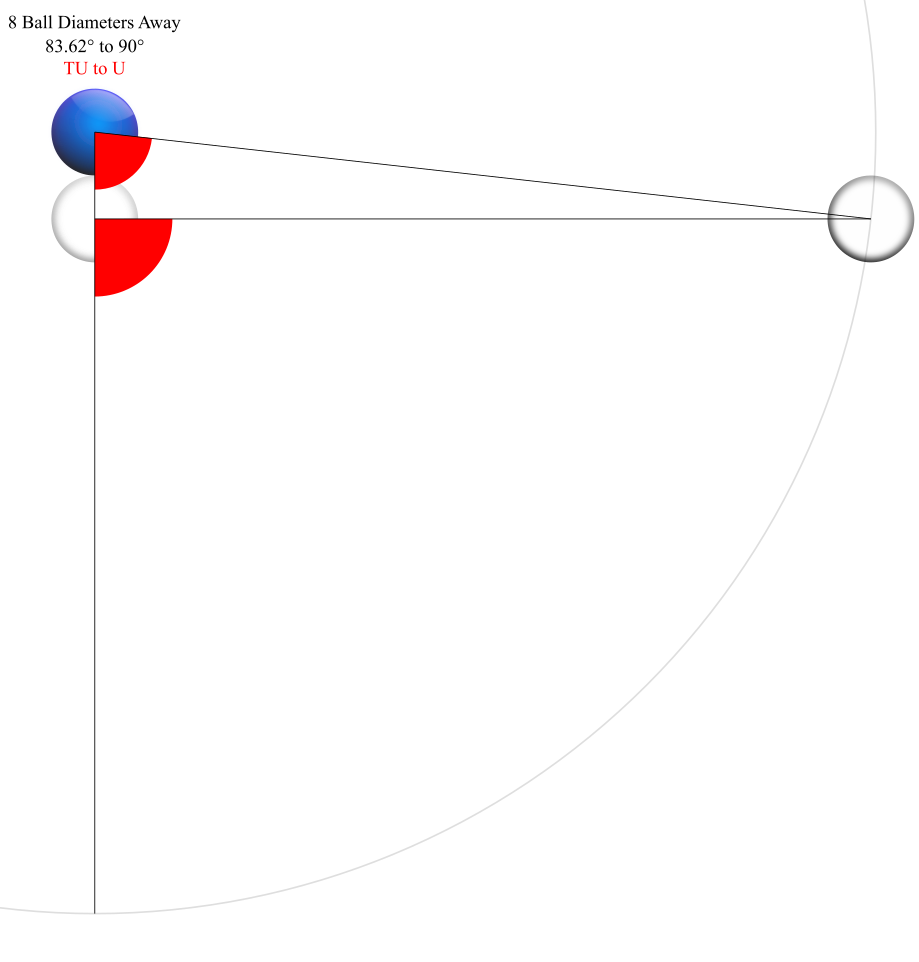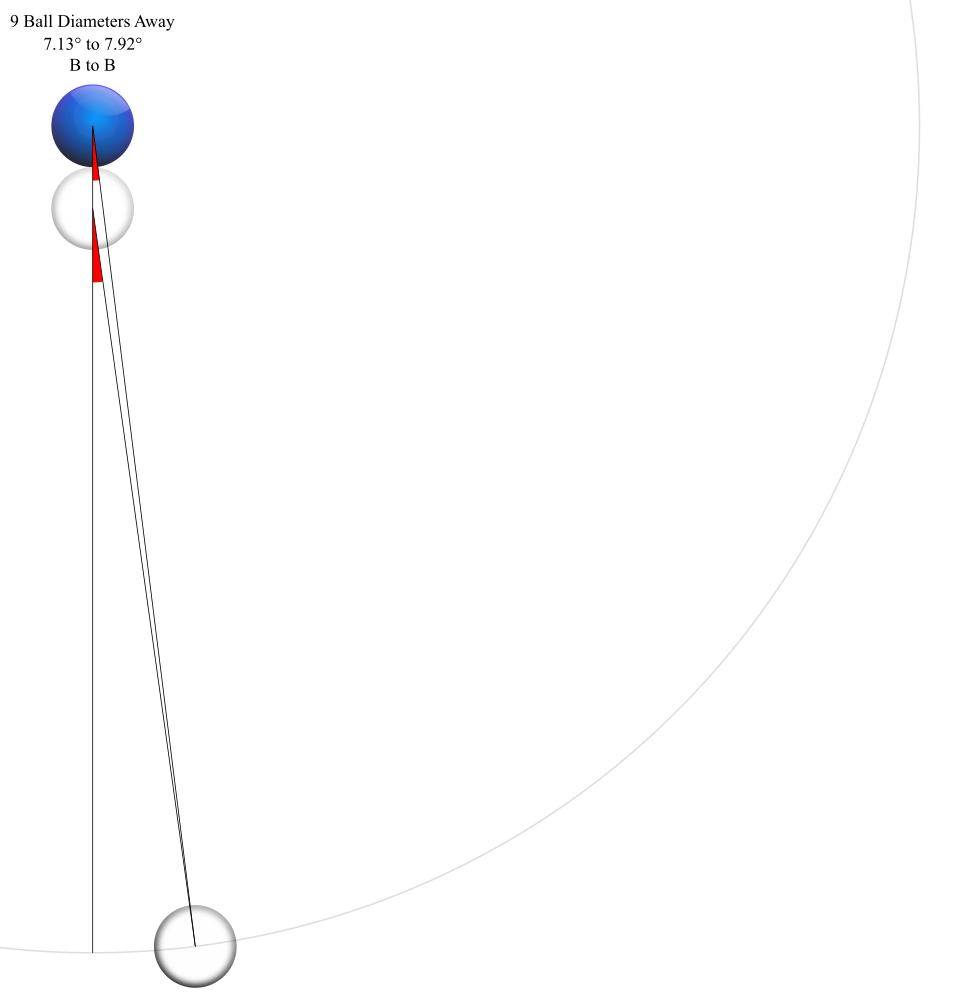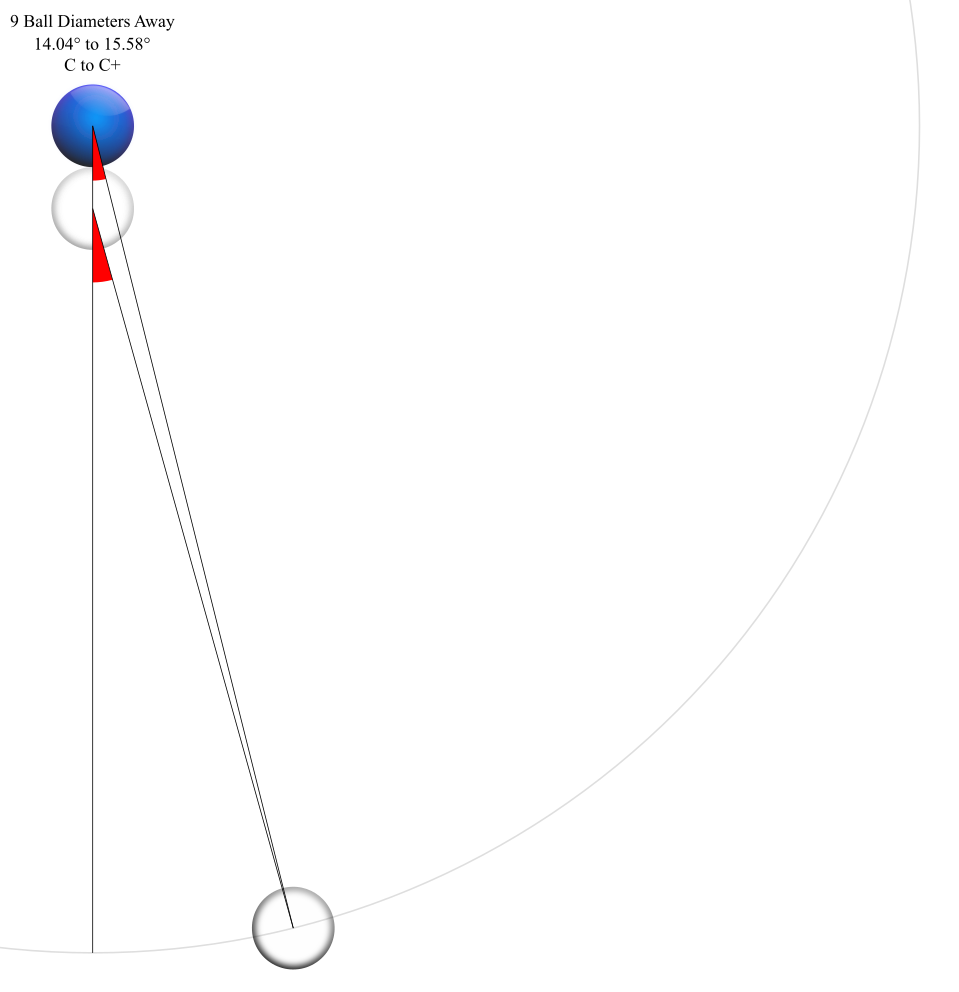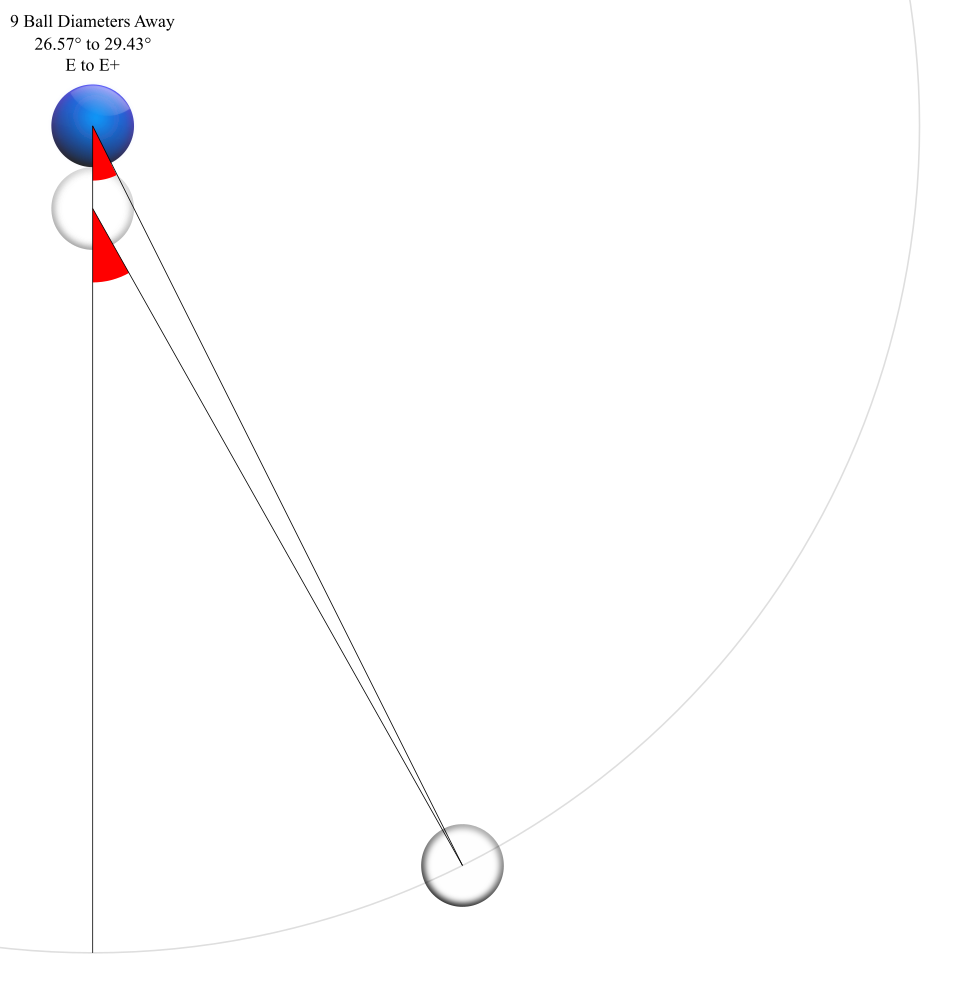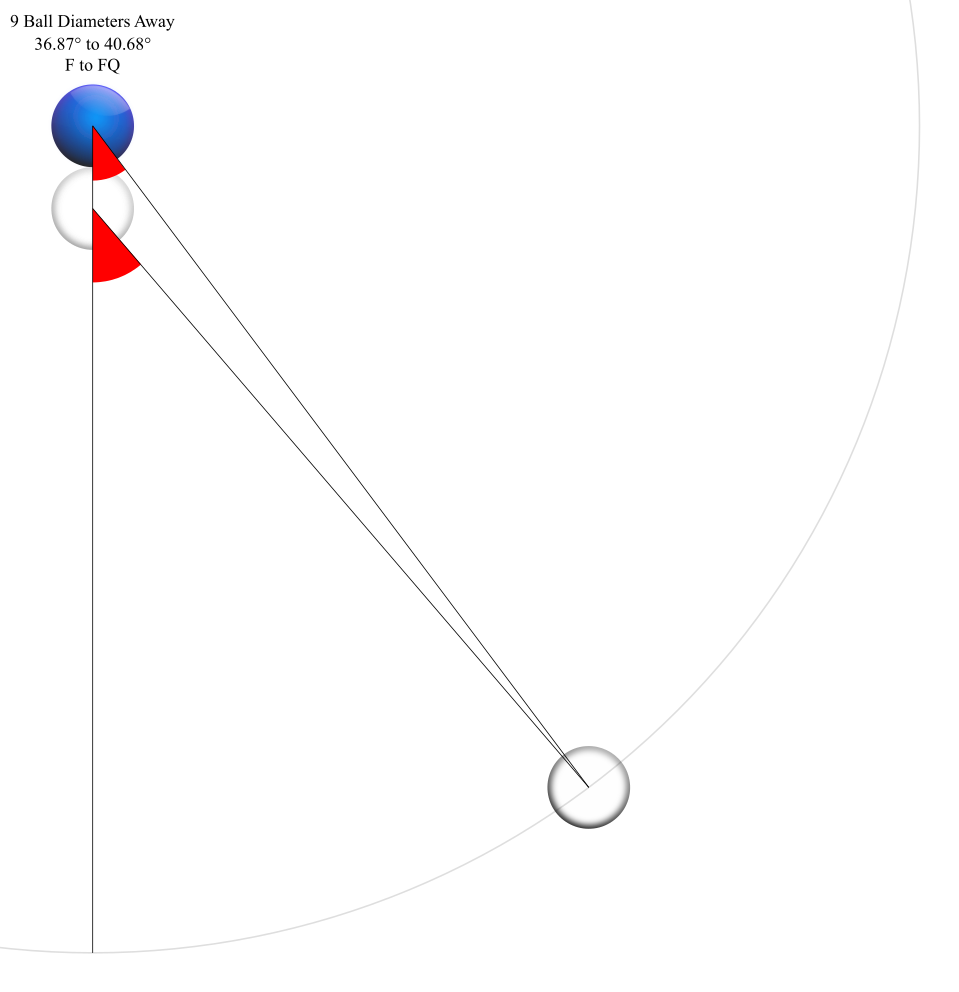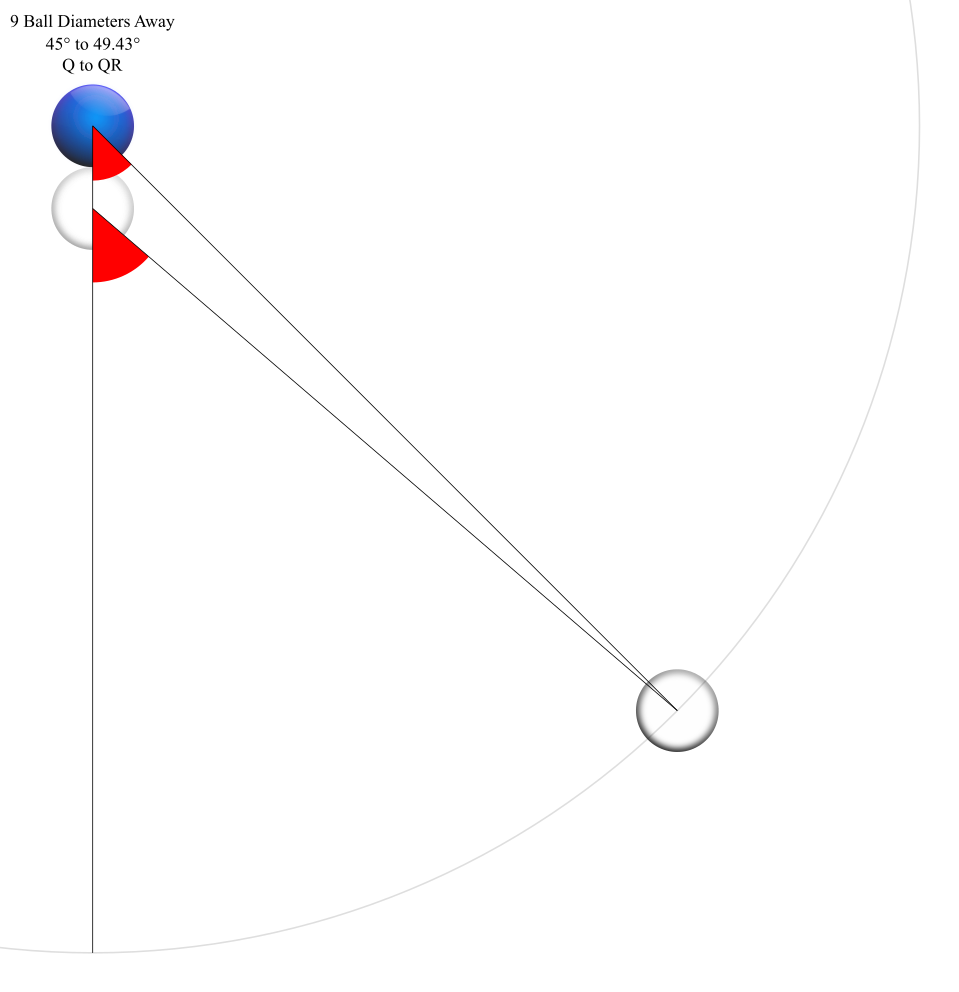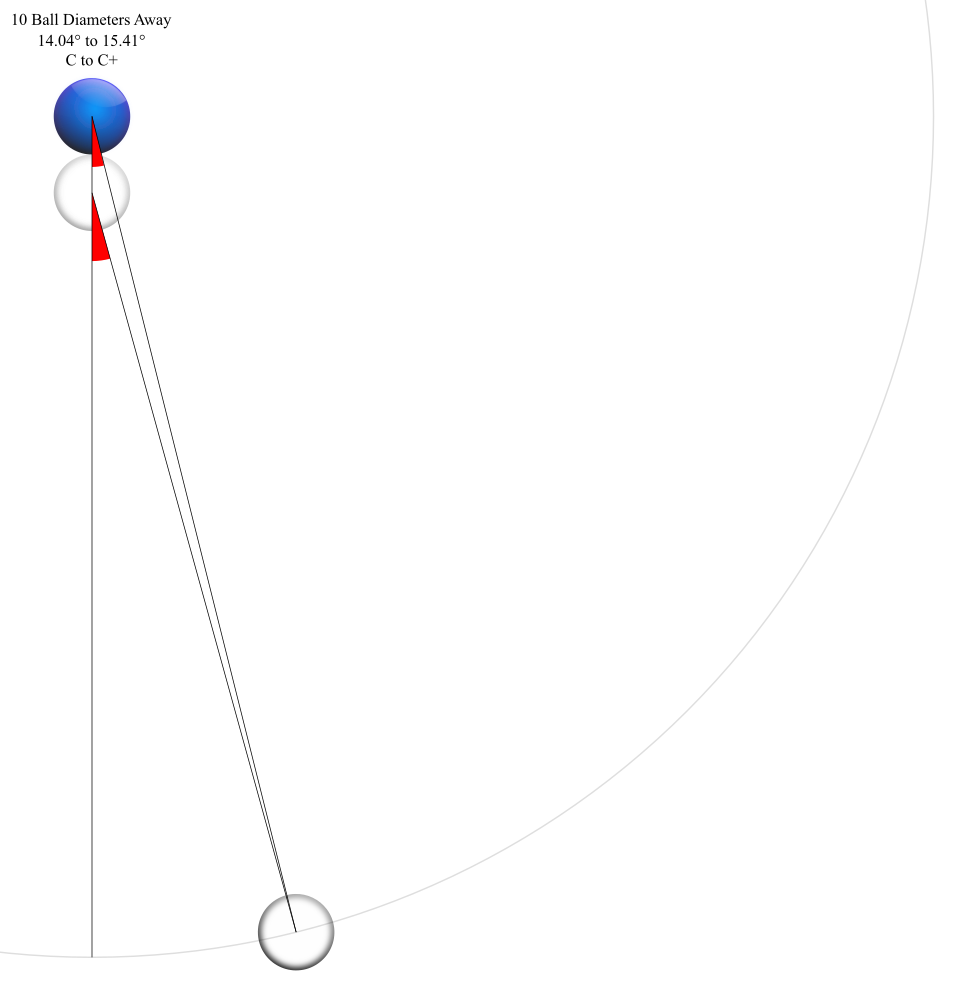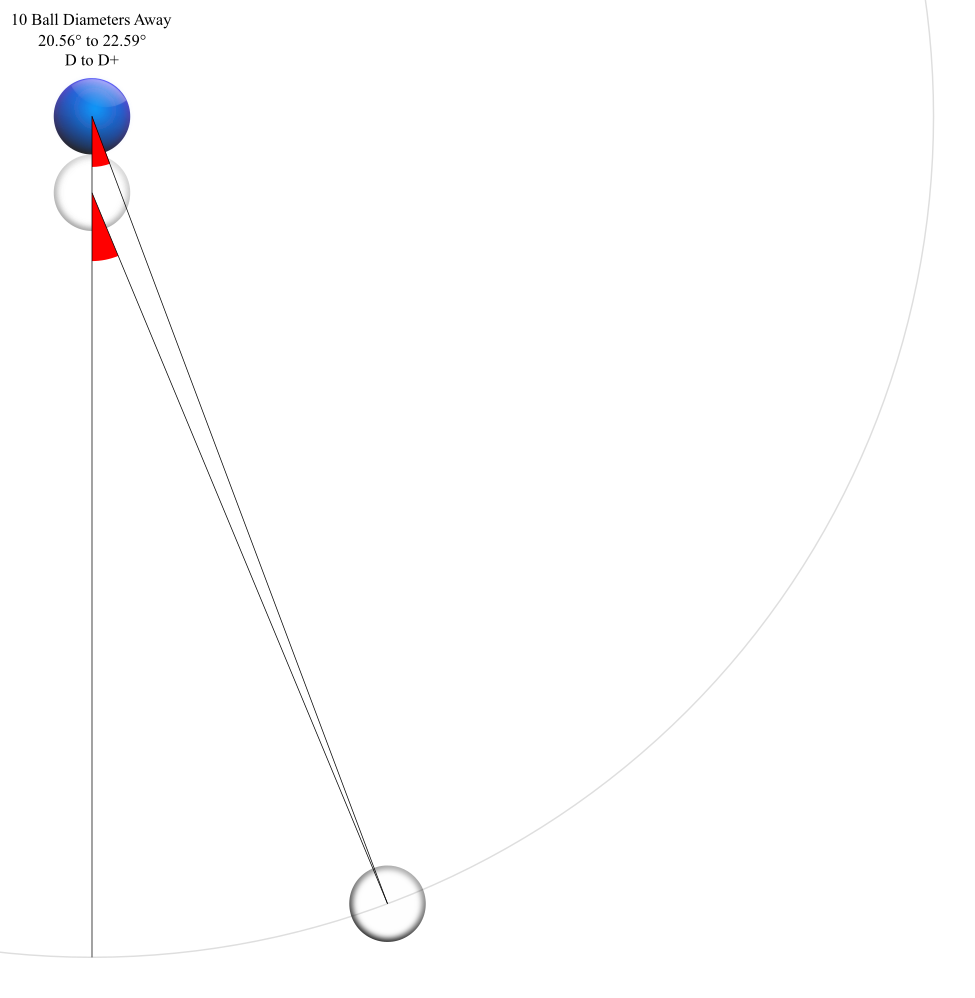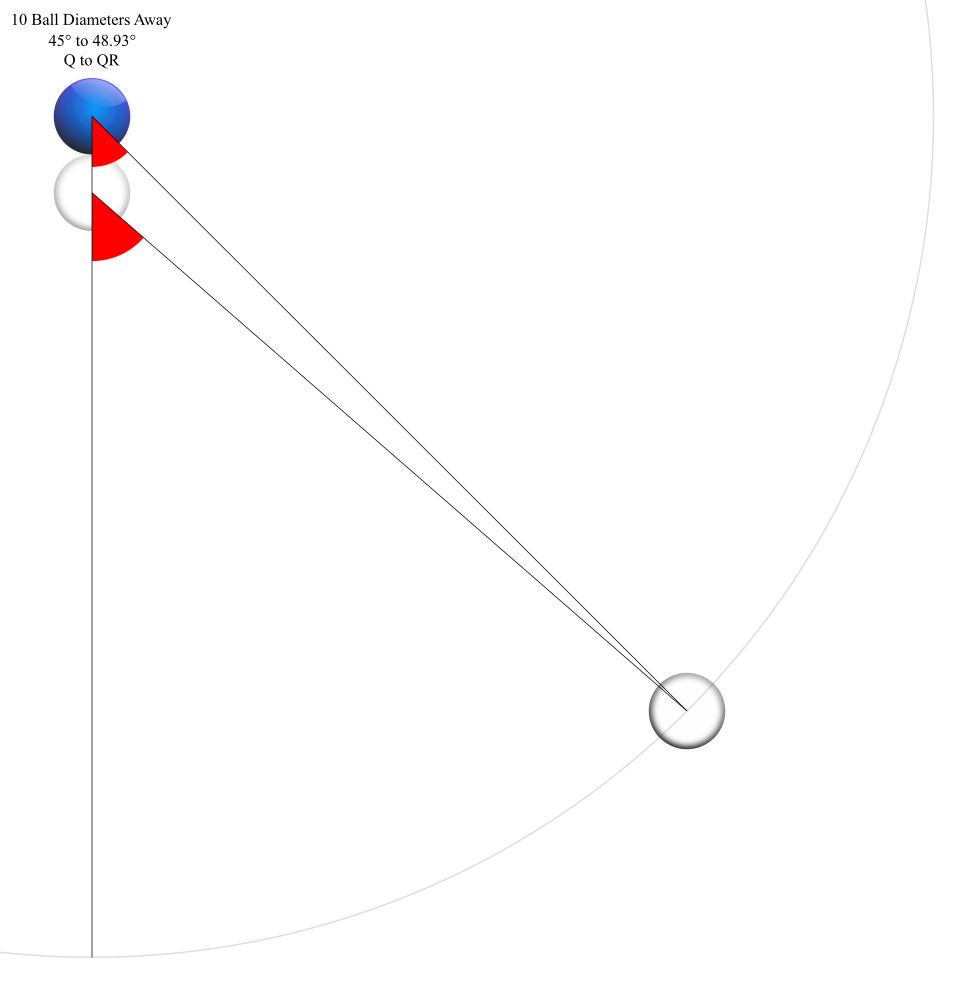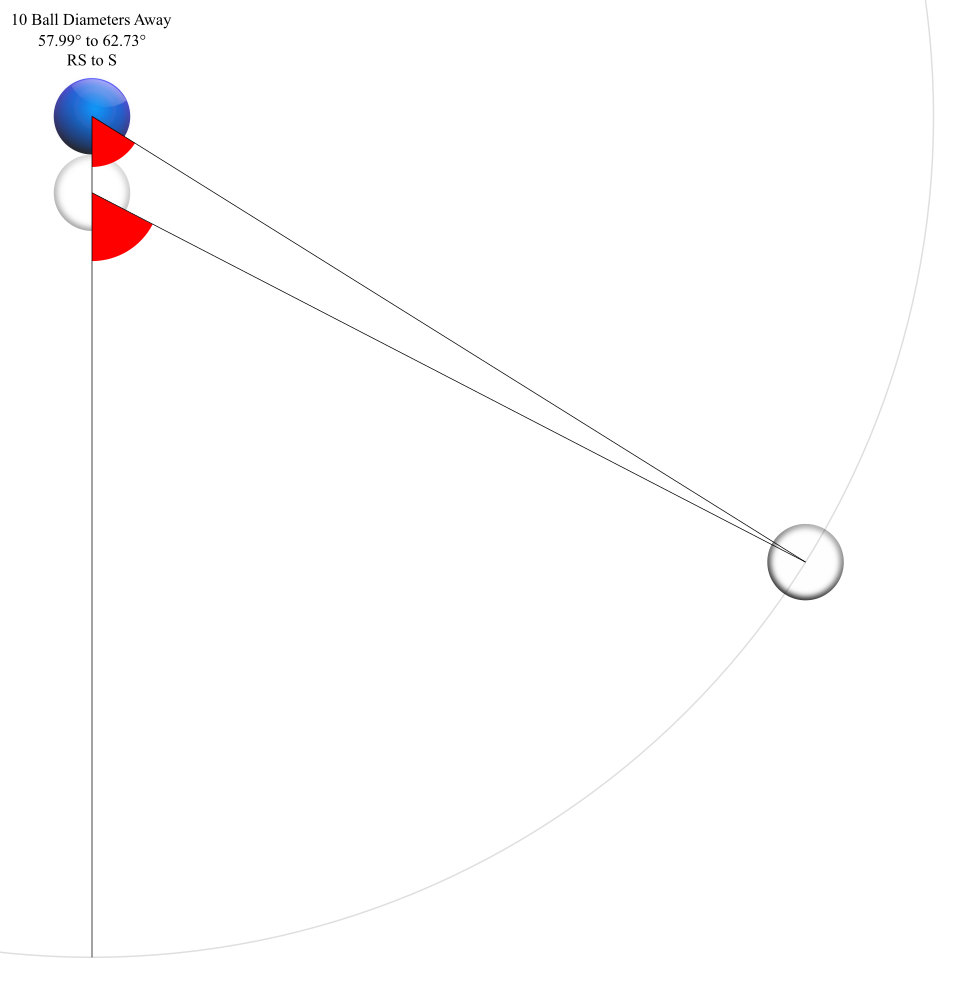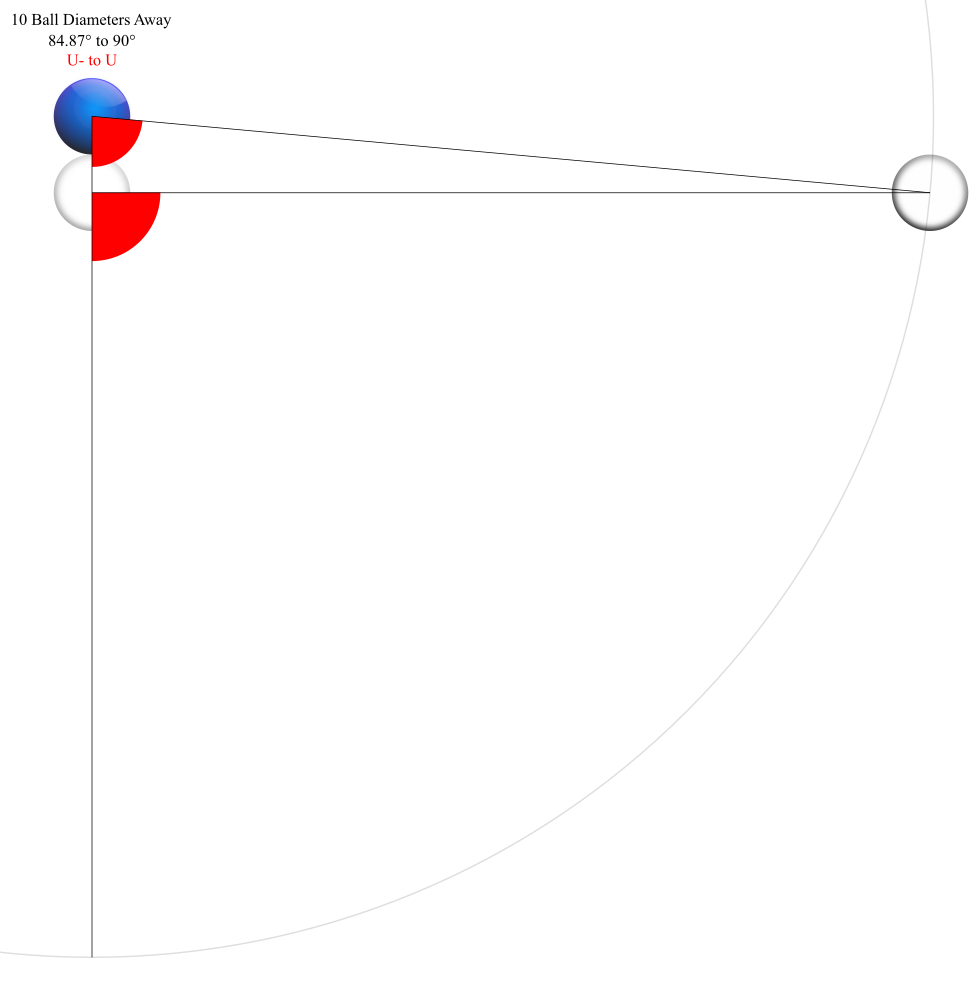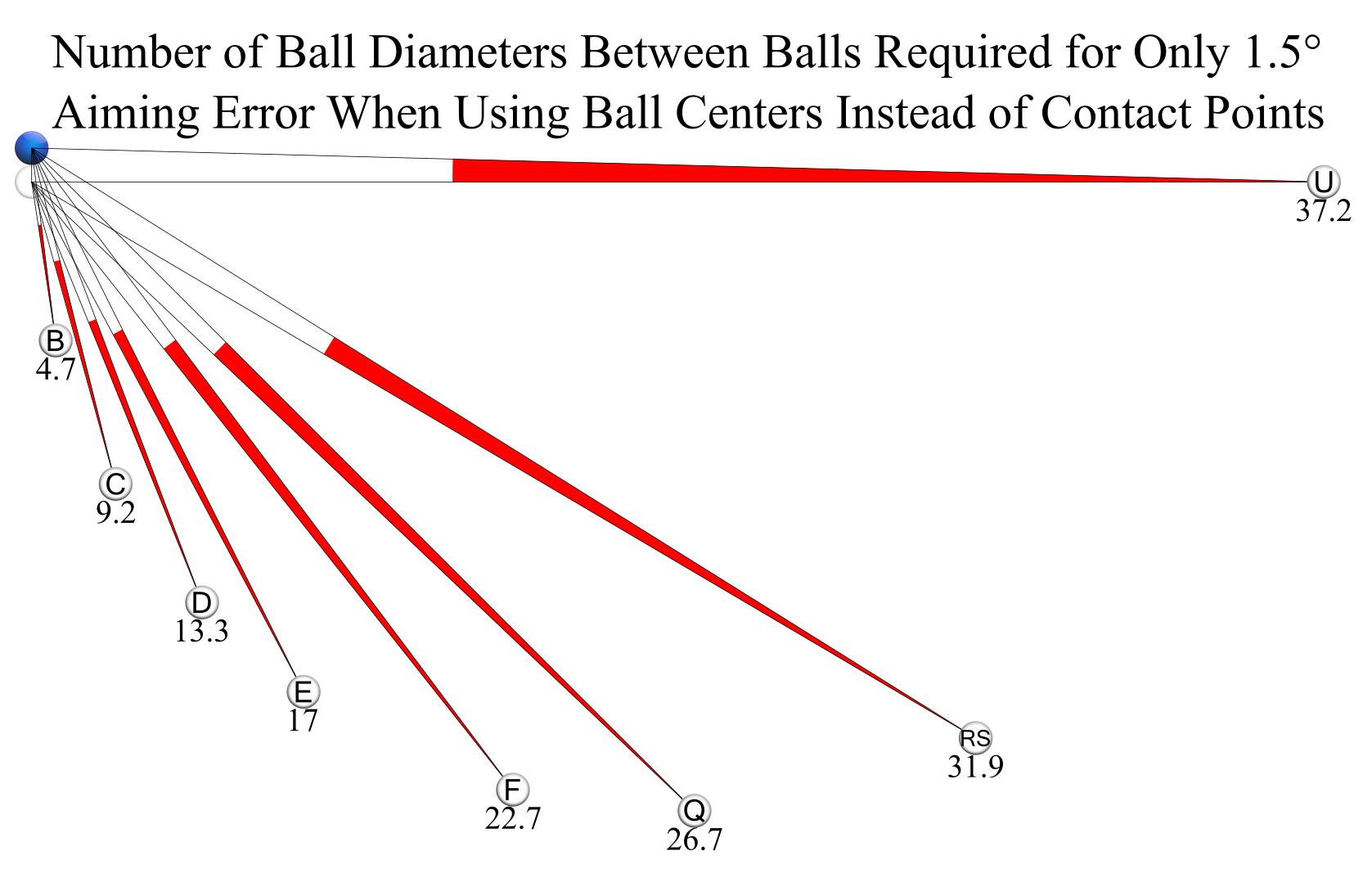Ball Distance Adjustments
This subject is going to get rather technical so feel free to skim through it or skip it entirely, but I wanted to visually show the demands placed upon the player by the factors of: varying distance between object ball and pocket, and varying distance between cue ball and object ball.
Object Ball to Pocket Room for Error
Below is a series of images showing the angle range available for an object ball to veer from the path to center of a corner pocket yet still be potted. This room for error is shown for 7 different distances between the object ball and the pocket. The range shown is for only one side of the pocket, so the range for the entire pocket would simply be double.
I chose to use the relationship of a standard 52.5mm snooker ball to a standard 86mm snooker pocket opening. This fits approximately 1.6 snooker ball diameters across the width at the narrowest area of the pocket opening.
The relationship of a standard 2.25 inch pool ball to a standard 4.5 inch pool pocket would allow some more room at 2 ball diameters across the width of the pocket opening, especially considering the more receptive straight cut of the pool pocket.
Notice that for every doubling of ball distance from the pocket, the available angle range is cut in half.
Fractional Aim Adjustments by Ball to Ball Distance
And now let’s have a look at the effect of choosing ball centers over ball contact points when detecting our Angle Detective shot labels.
The following series of images shows the label and angle aiming adjustments that would be necessary if measuring from ball centers rather than from ball contact points for the main Angle Detective reference aims at 15 different ball distances. The ‘A’ label is not shown, because ‘A’ is the same measurement of 0° whether using centers or contact points.
The first label listed in each image is the Angle Detective reference aim using ball centers. The second label is the adjusted and proper label using ball contact points or cue ball to ghost ball centers.
1/8 Ball Away
1/4 Ball Away
1/2 Ball Away
1 Ball Away
1.5 Balls Away
2 Balls Away
2.5 Balls Away
3 Balls Away
4 Balls Away
5 Balls Away
6 Balls Away
7 Balls Away
8 Balls Away
9 Balls Away
10 Balls Away
Now let’s suppose that as long as our aim is no more than 1.5° off of perfect we can still pot an object ball. How far apart would the object ball and cue ball have to be from one another before we could ignore contact points and instead use ball centers to measure our shots?
The image below shows that this necessary distance increases as the reference angle increases.
The chart below translates these ball diameters into standard measurements for snooker and pool.
For example, if a snooker cue ball and object ball are 70 cm apart, we know that any shot from ‘A’ to ‘D’ measured using ball centers would not require a label adjustment before shooting. Or if the balls are 2 meters apart, all shots can be measured using ball centers.
Another example would be if pool balls were 2 feet apart. As long as our shot measurement using ball centers is anywhere from ‘A’ to ‘C’ we wouldn’t have to adjust the label before shooting.




